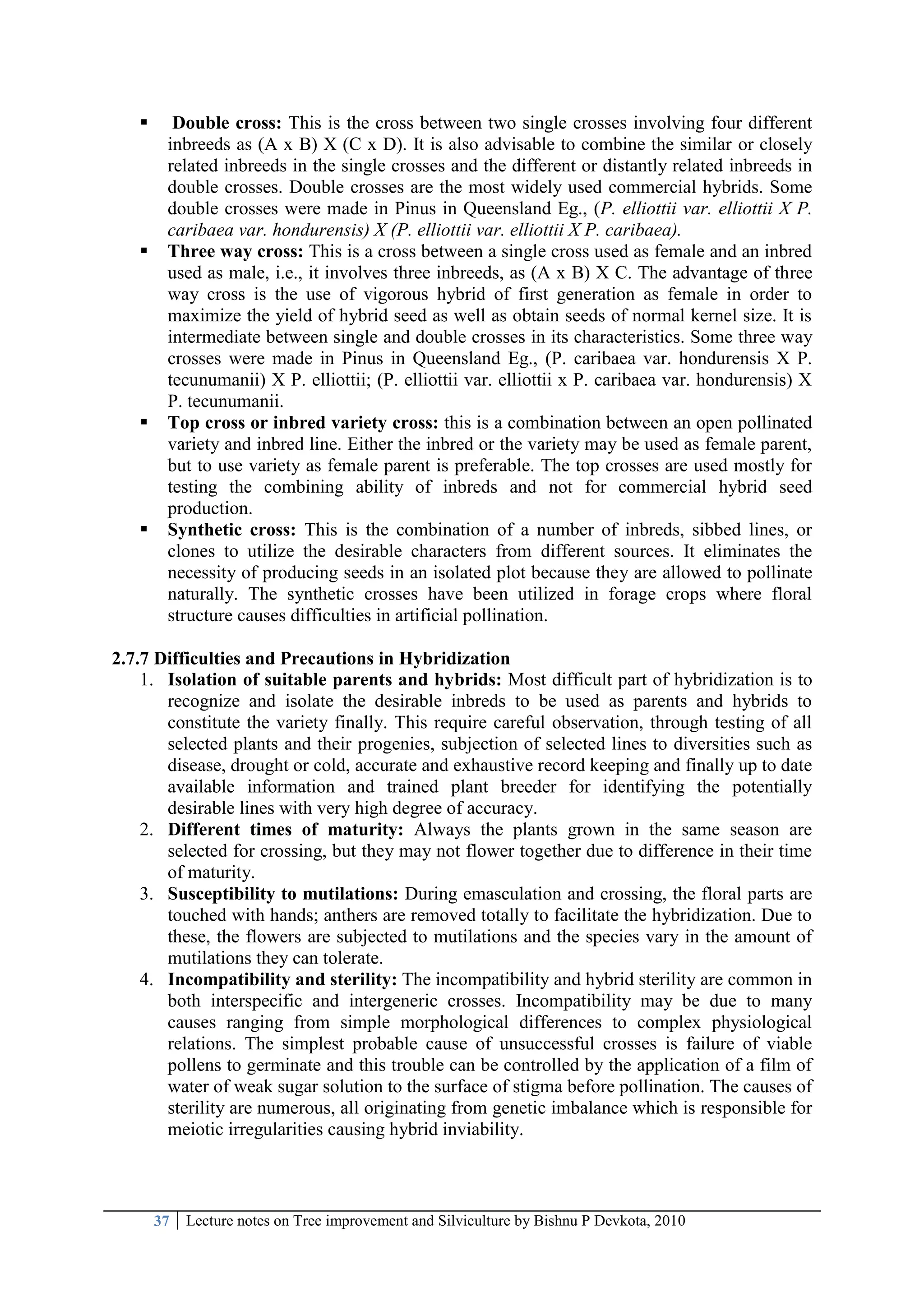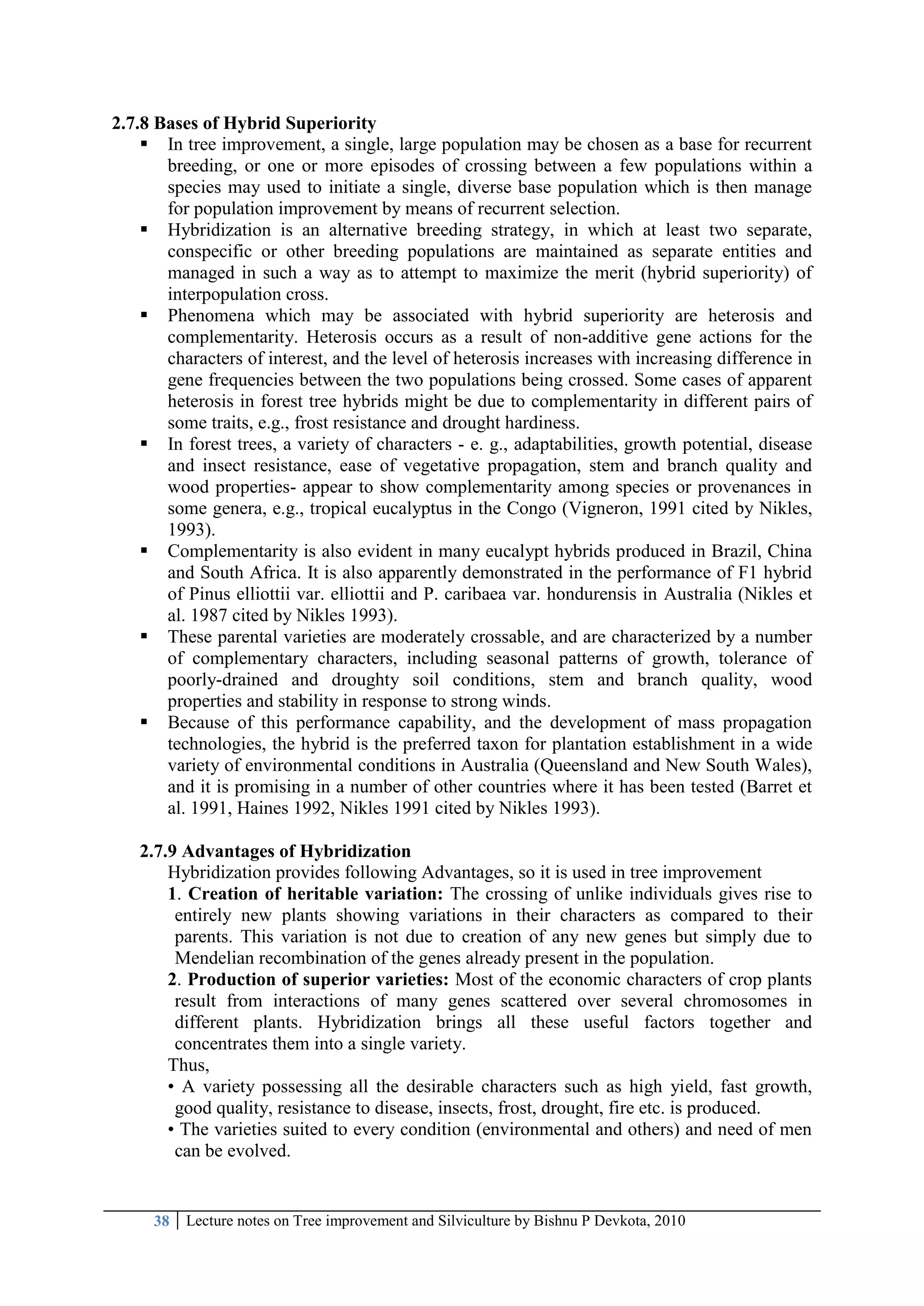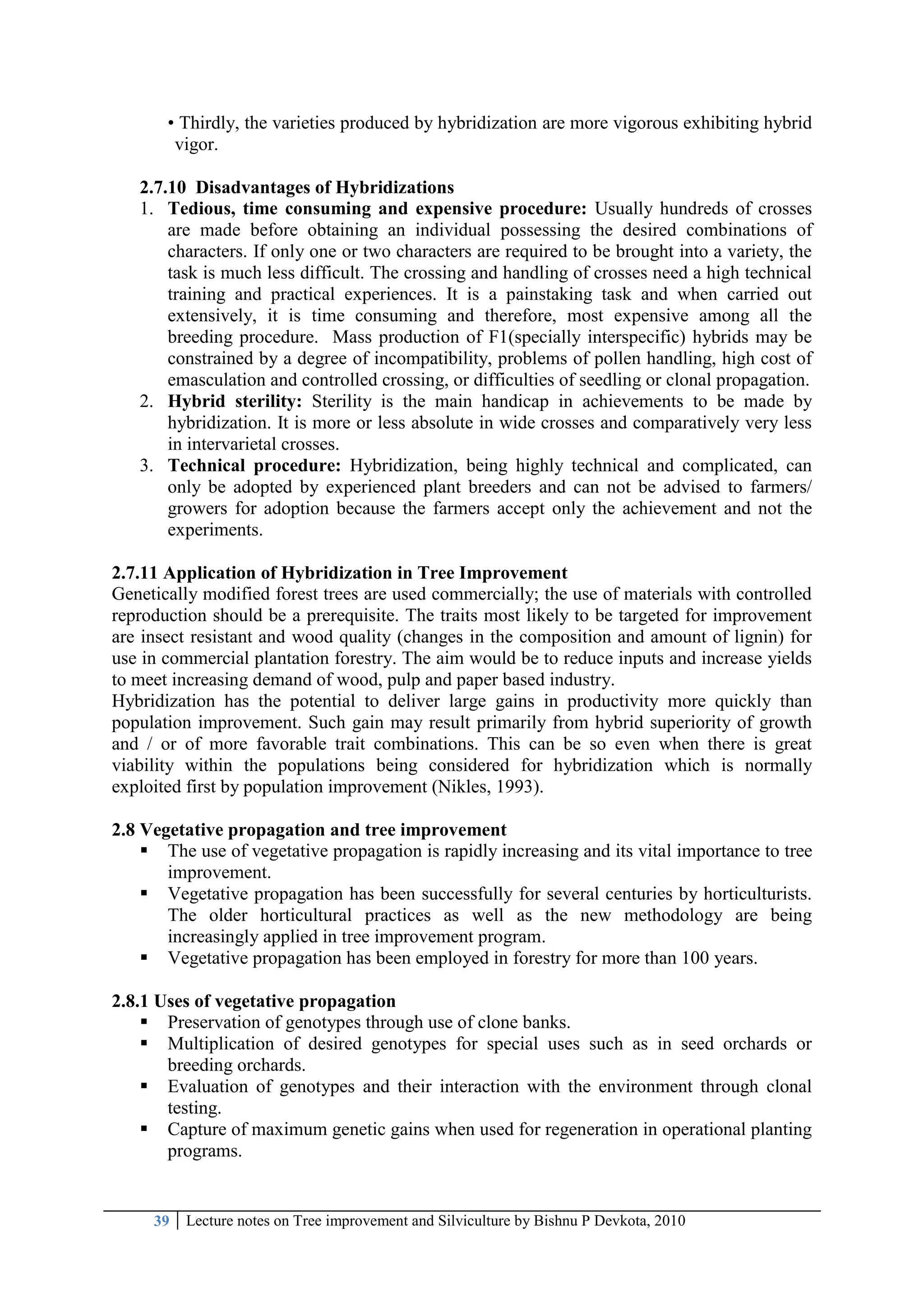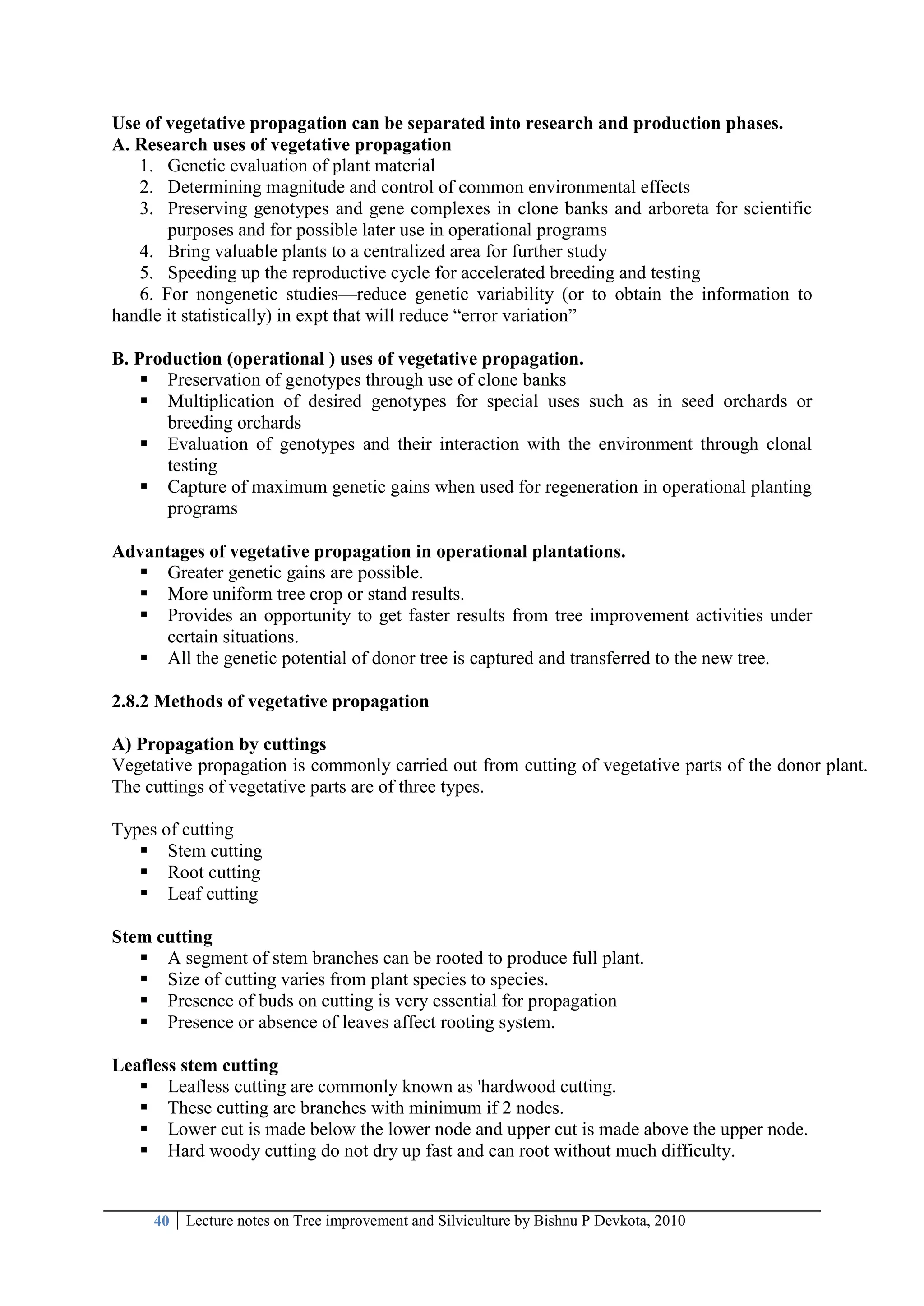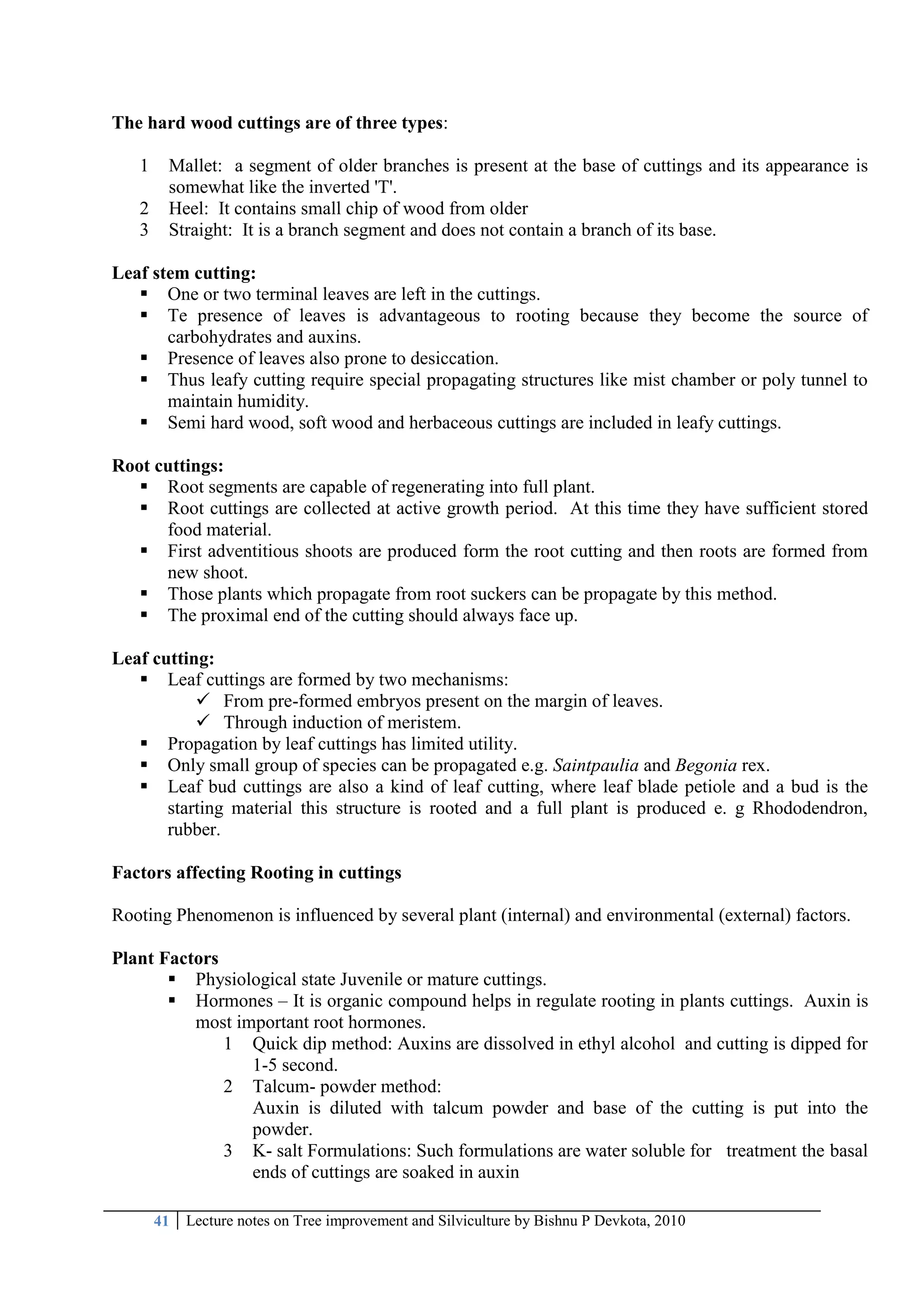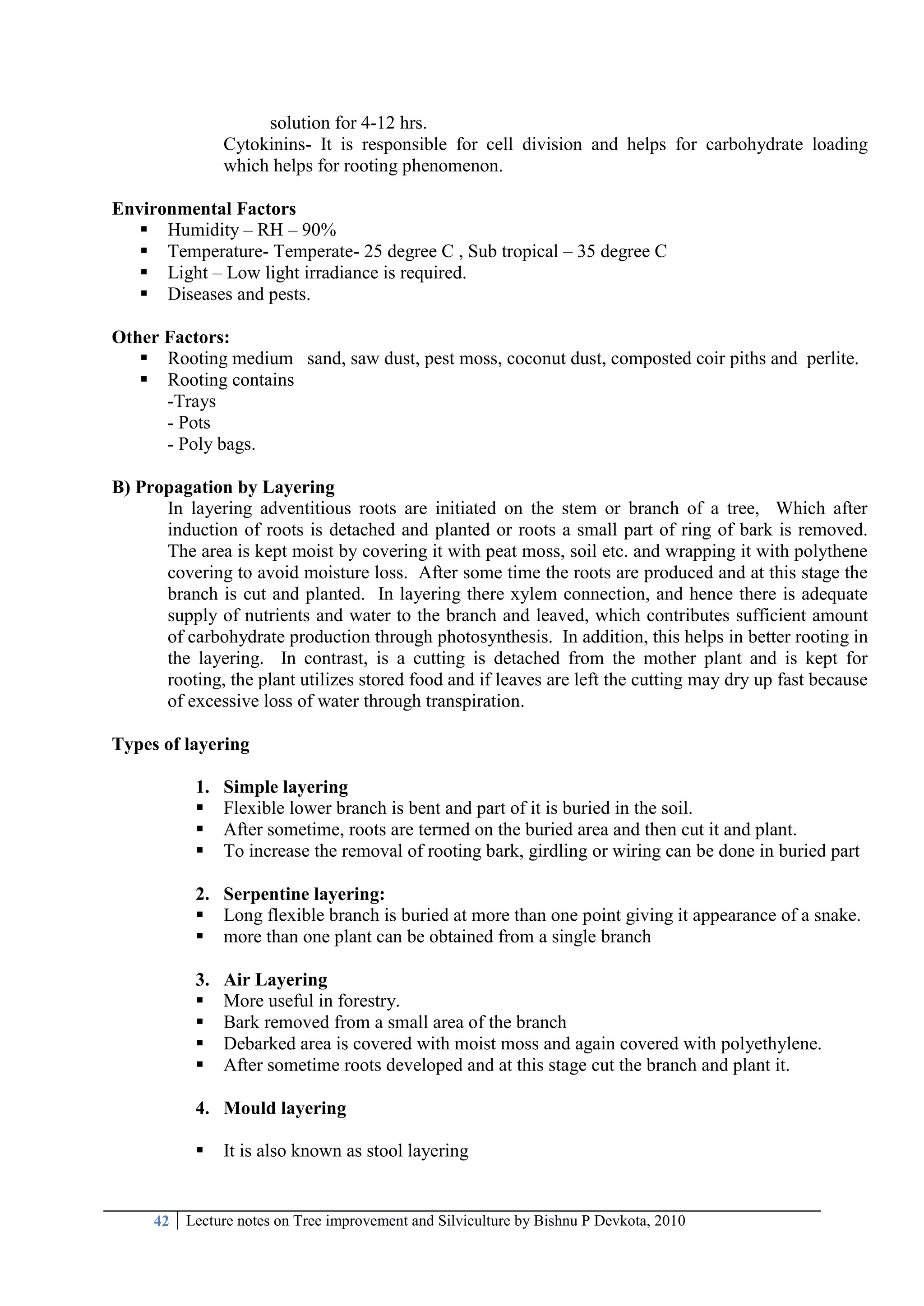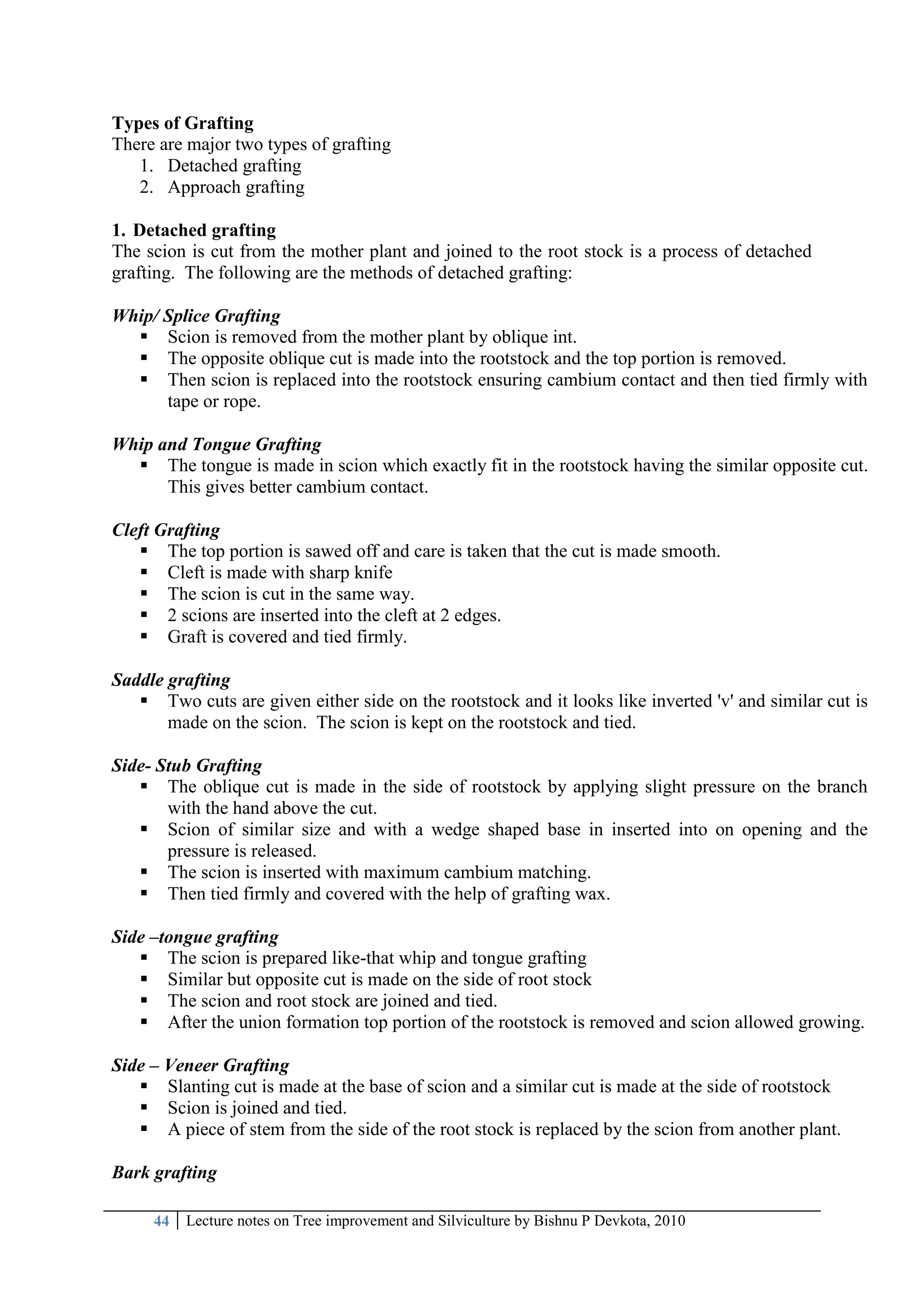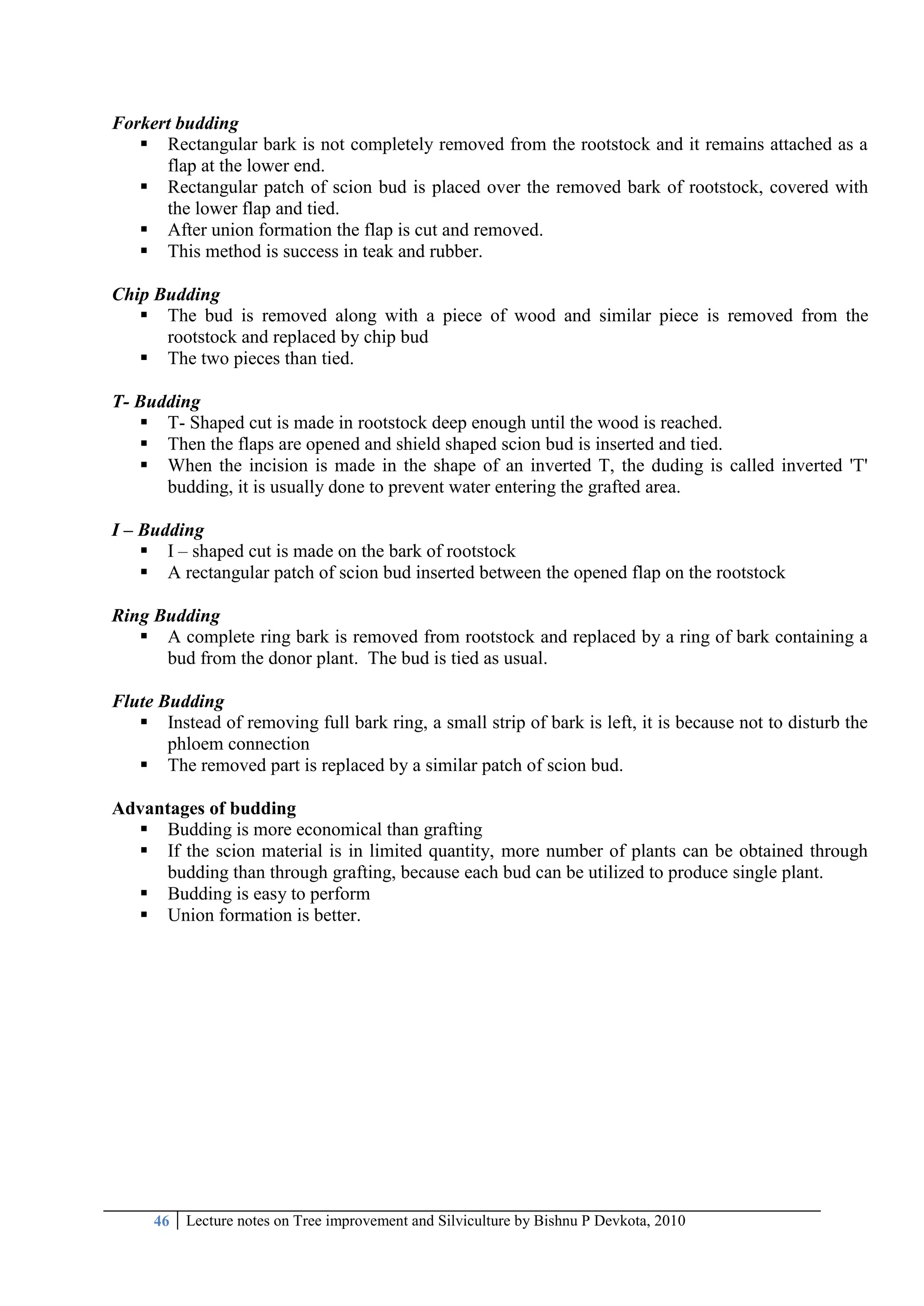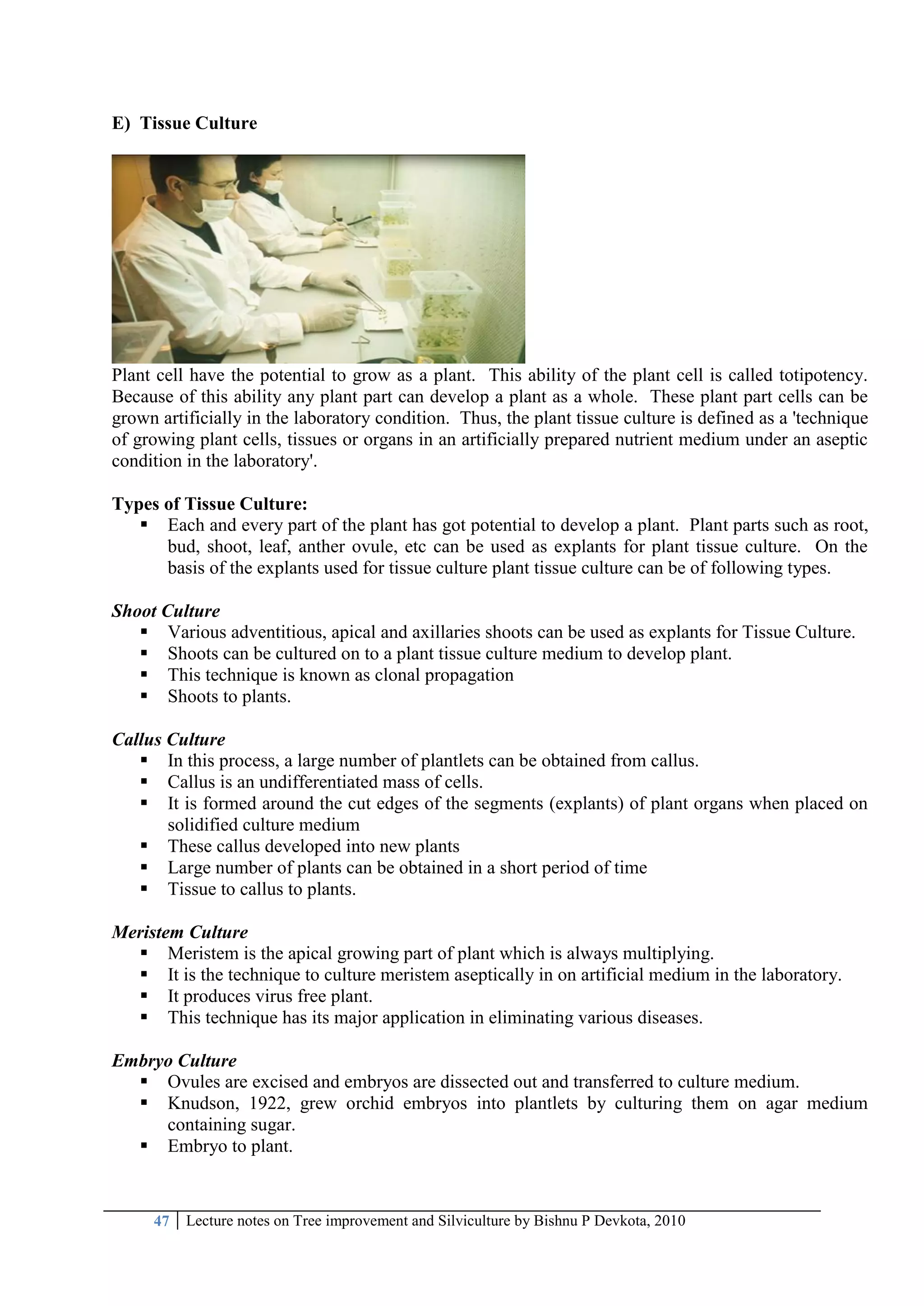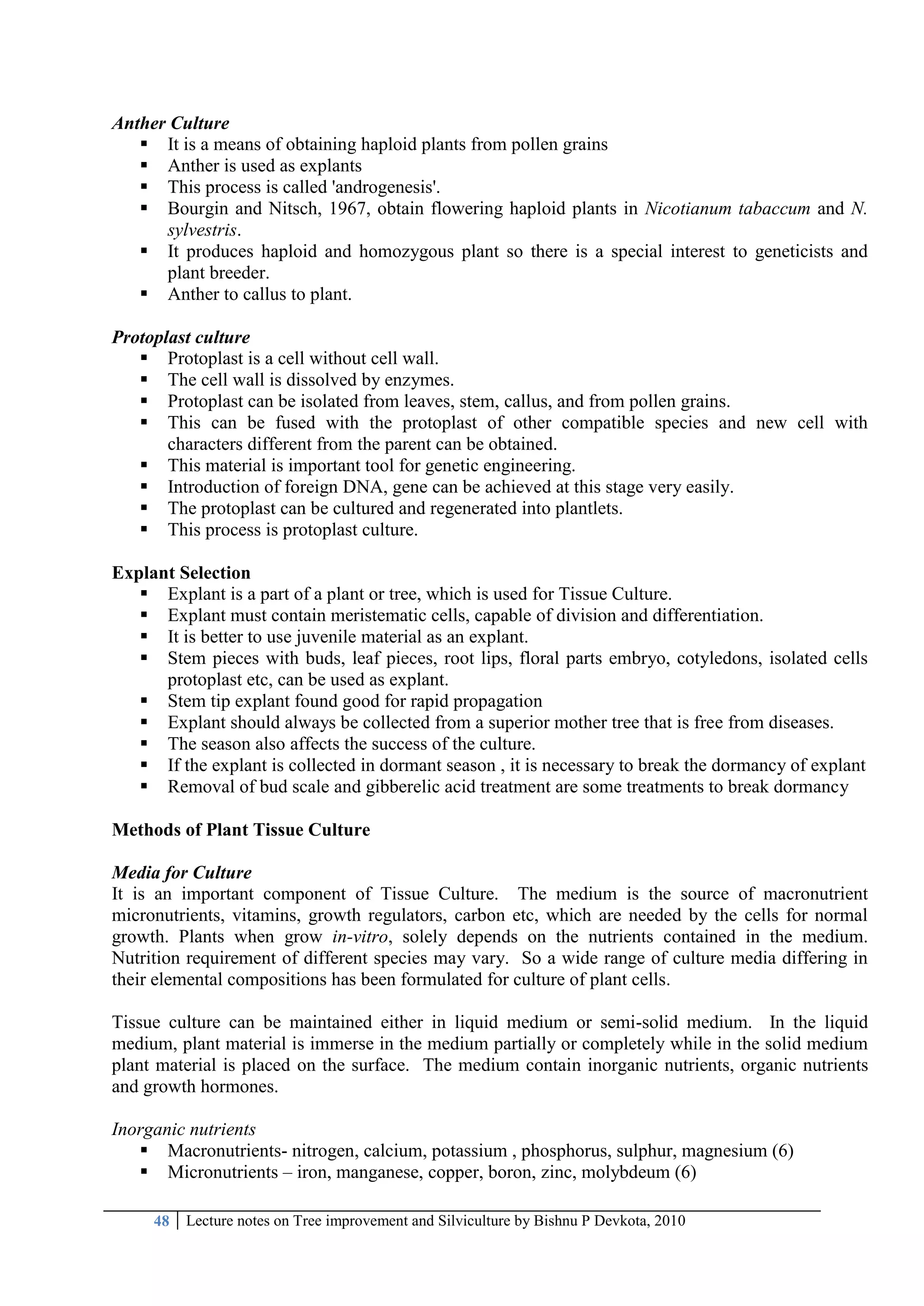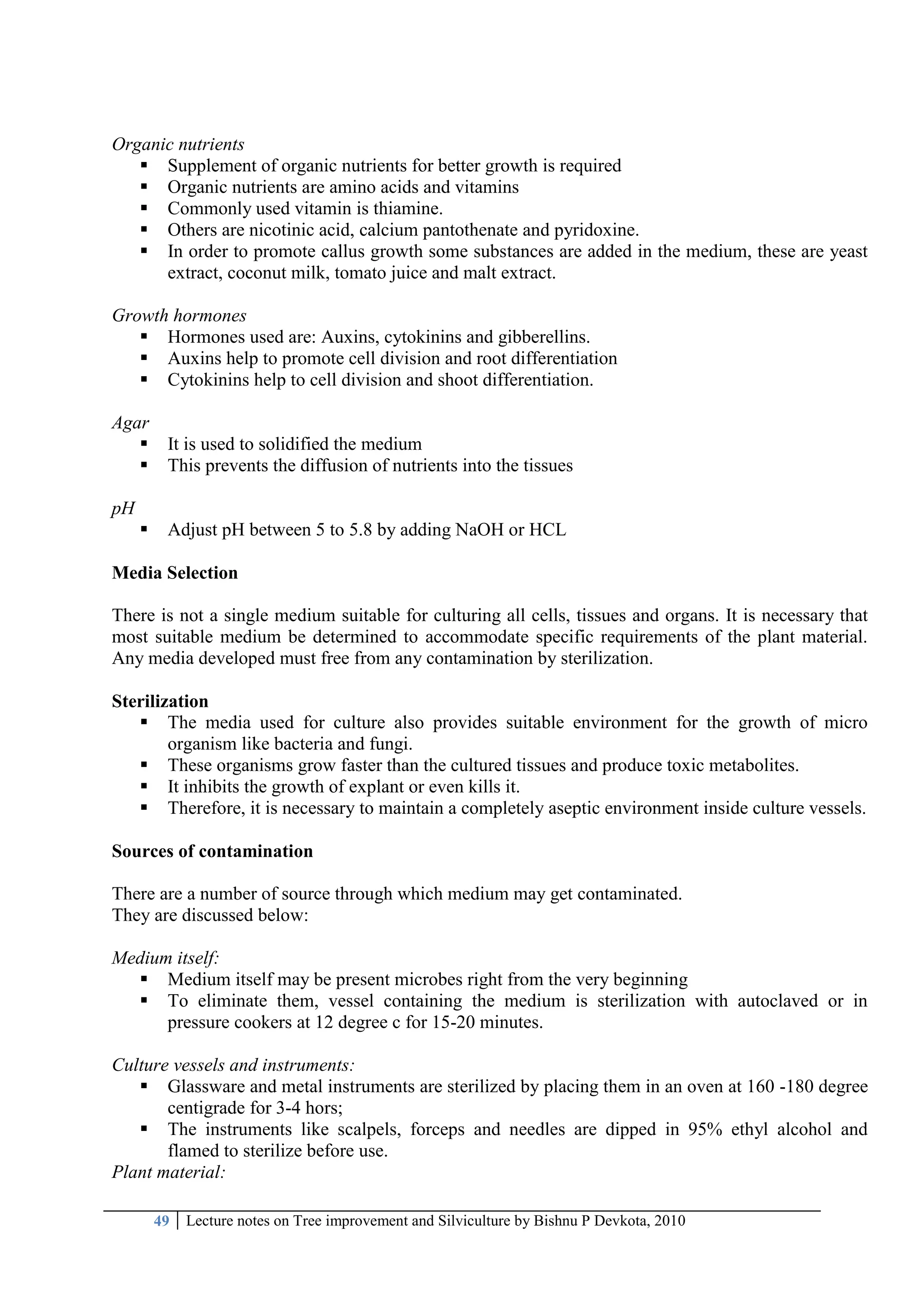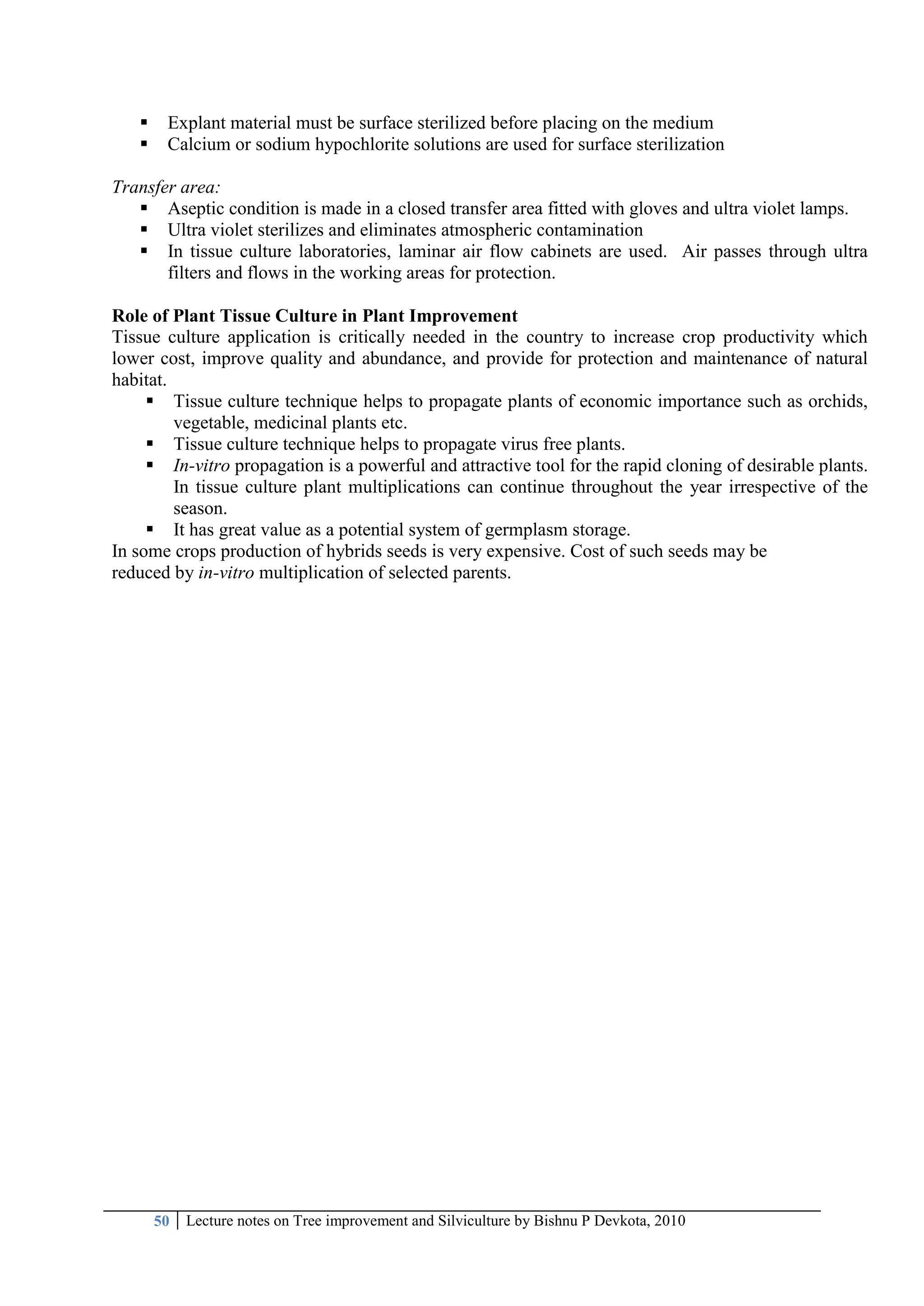This document provides lecture notes on tree improvement and silviculture. It begins with definitions of key terms used in tree improvement like additive genes, allele, backward selection, breeding orchard, breeding population, and breeding value. It then discusses the objectives and importance of tree improvement, noting that it aims to increase tree value through selection, breeding, and testing of desirable trees over multiple generations. The document emphasizes that tree improvement relies on understanding and utilizing natural genetic variation in tree populations.
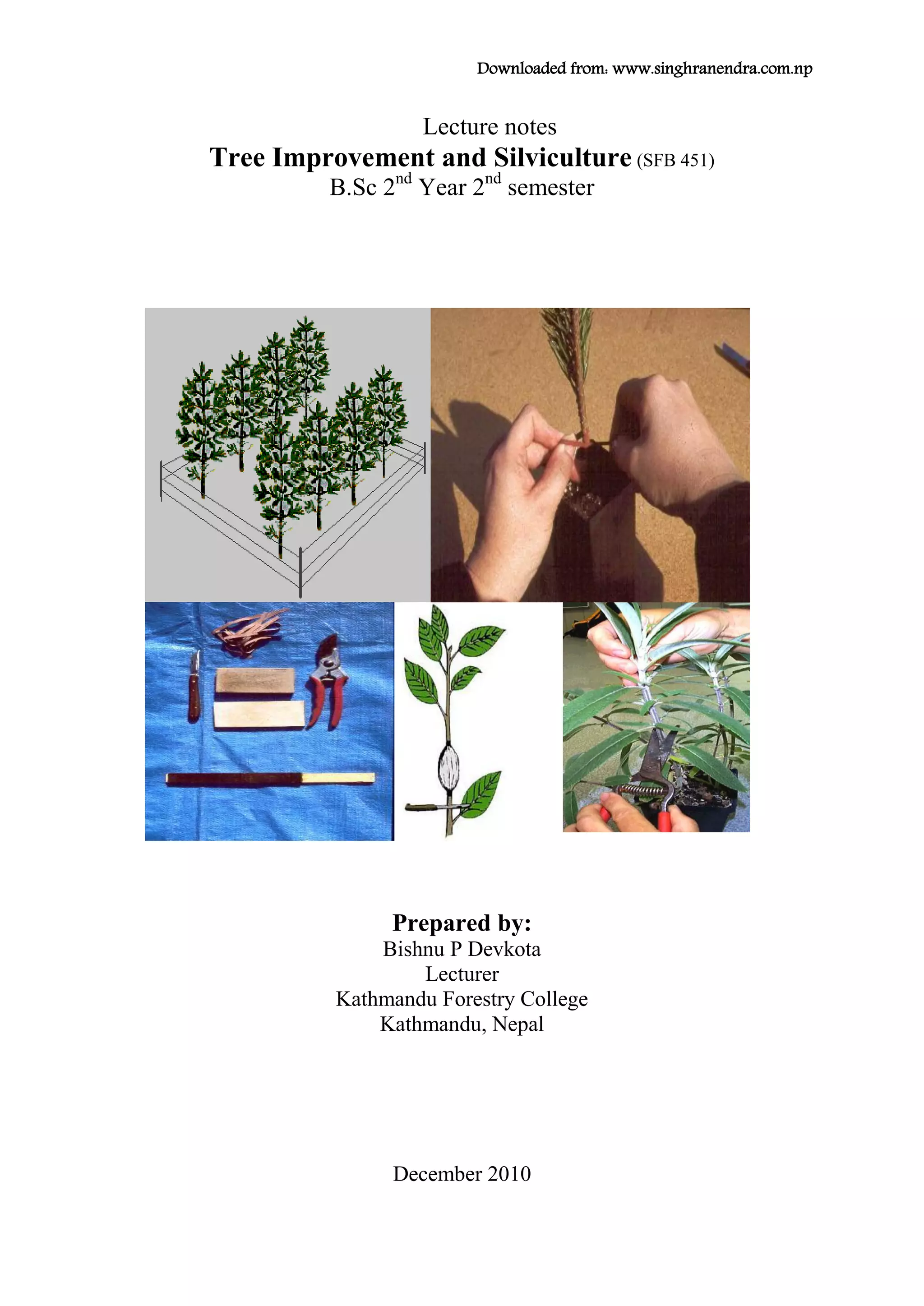
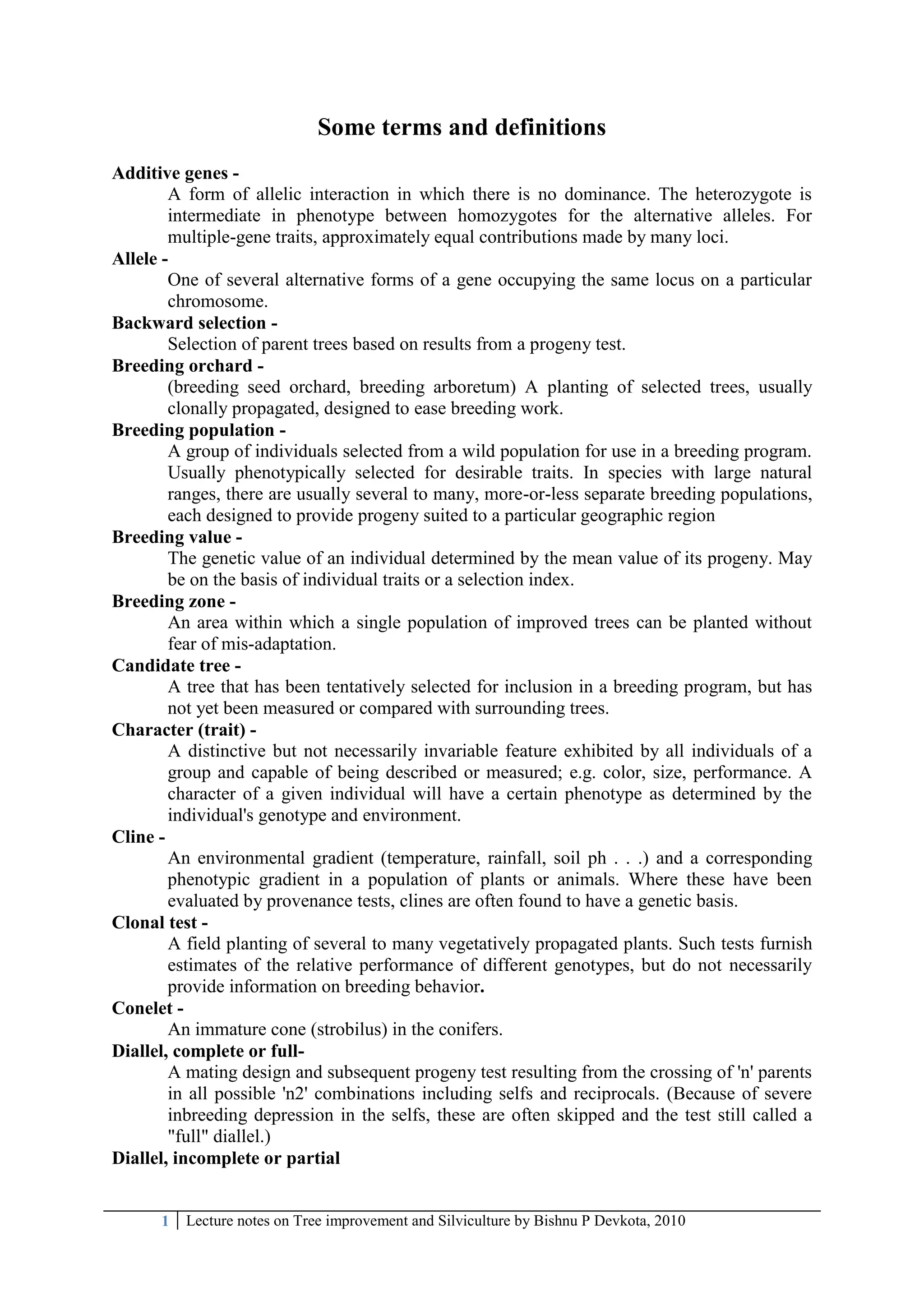
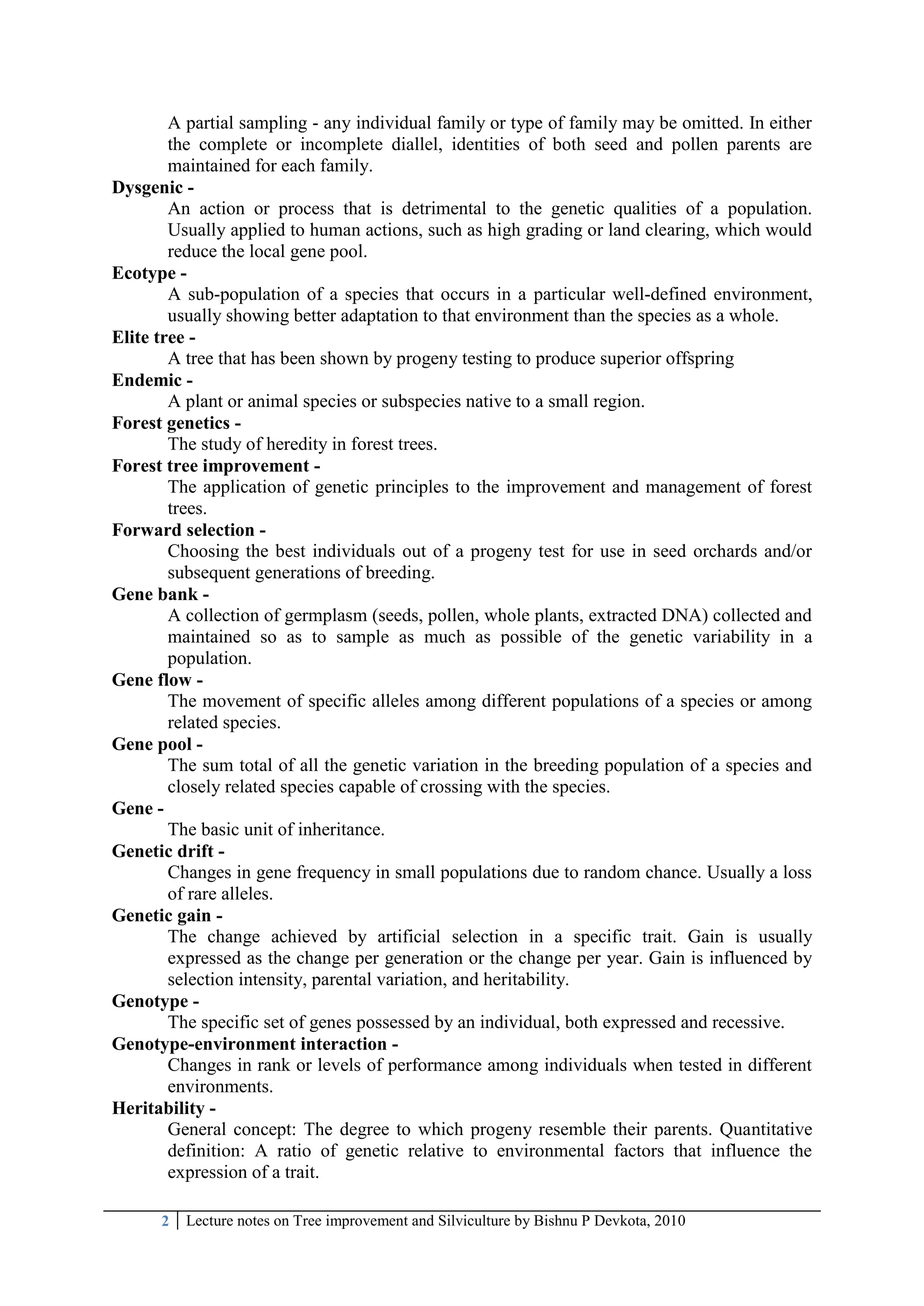
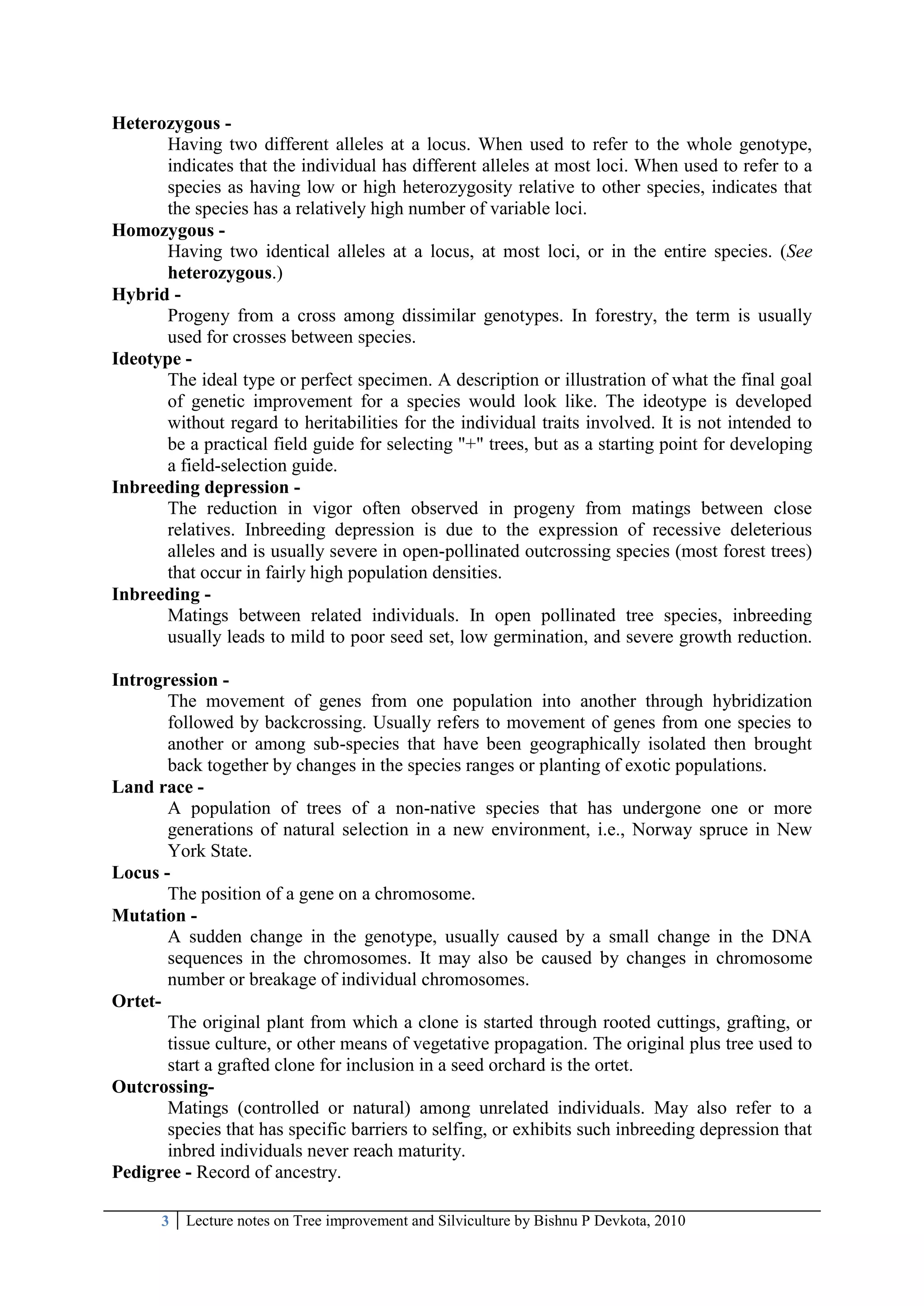
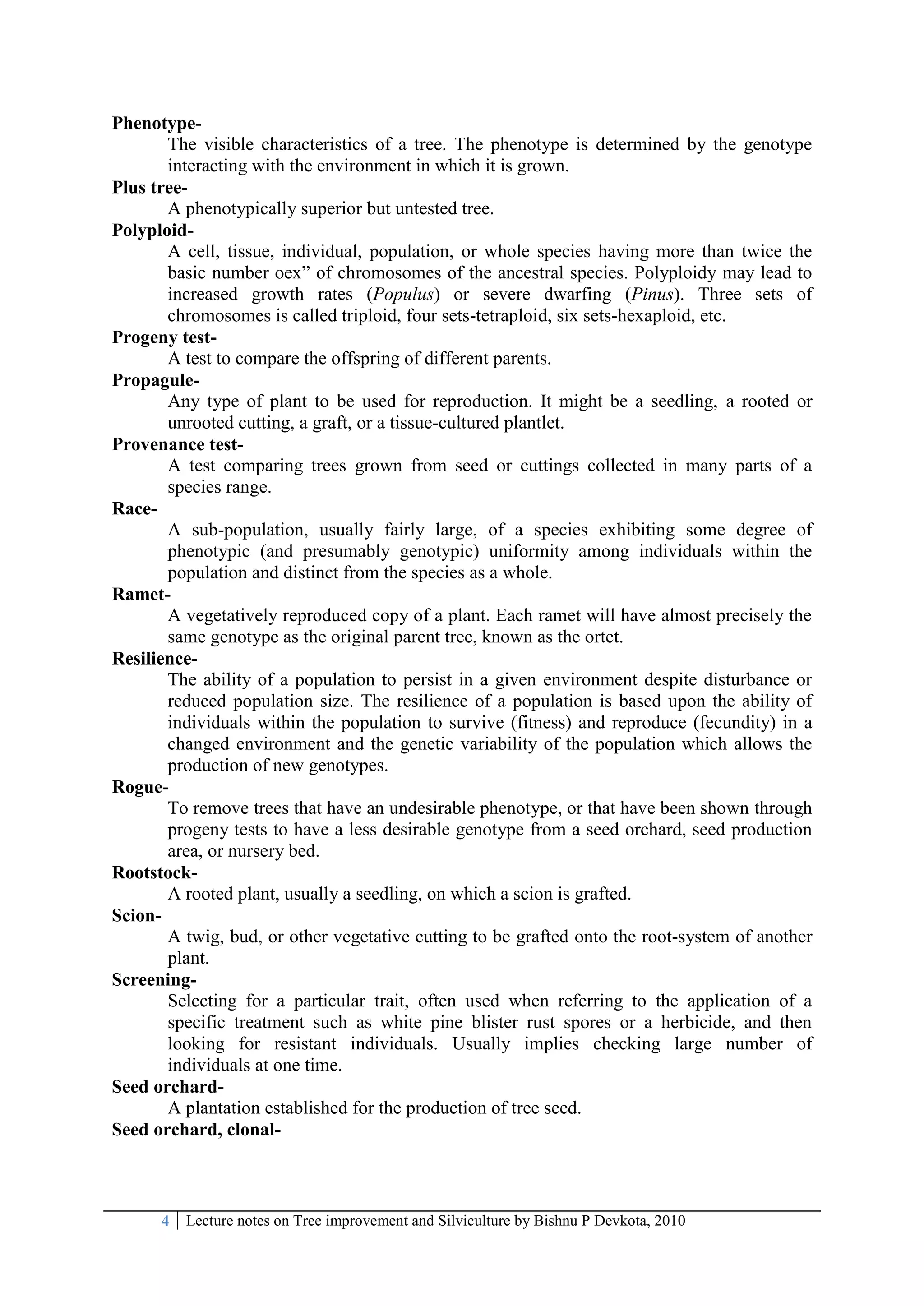
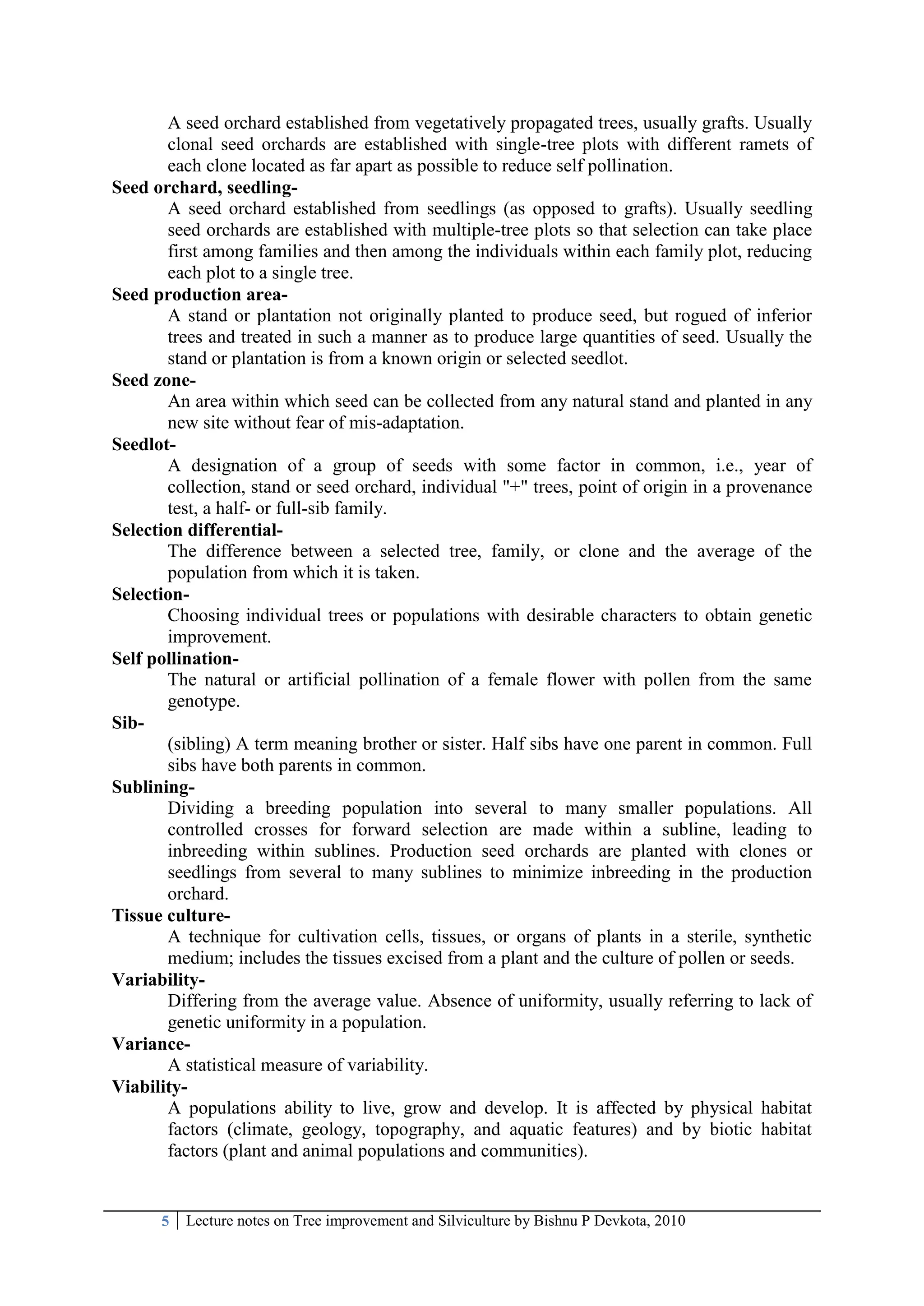
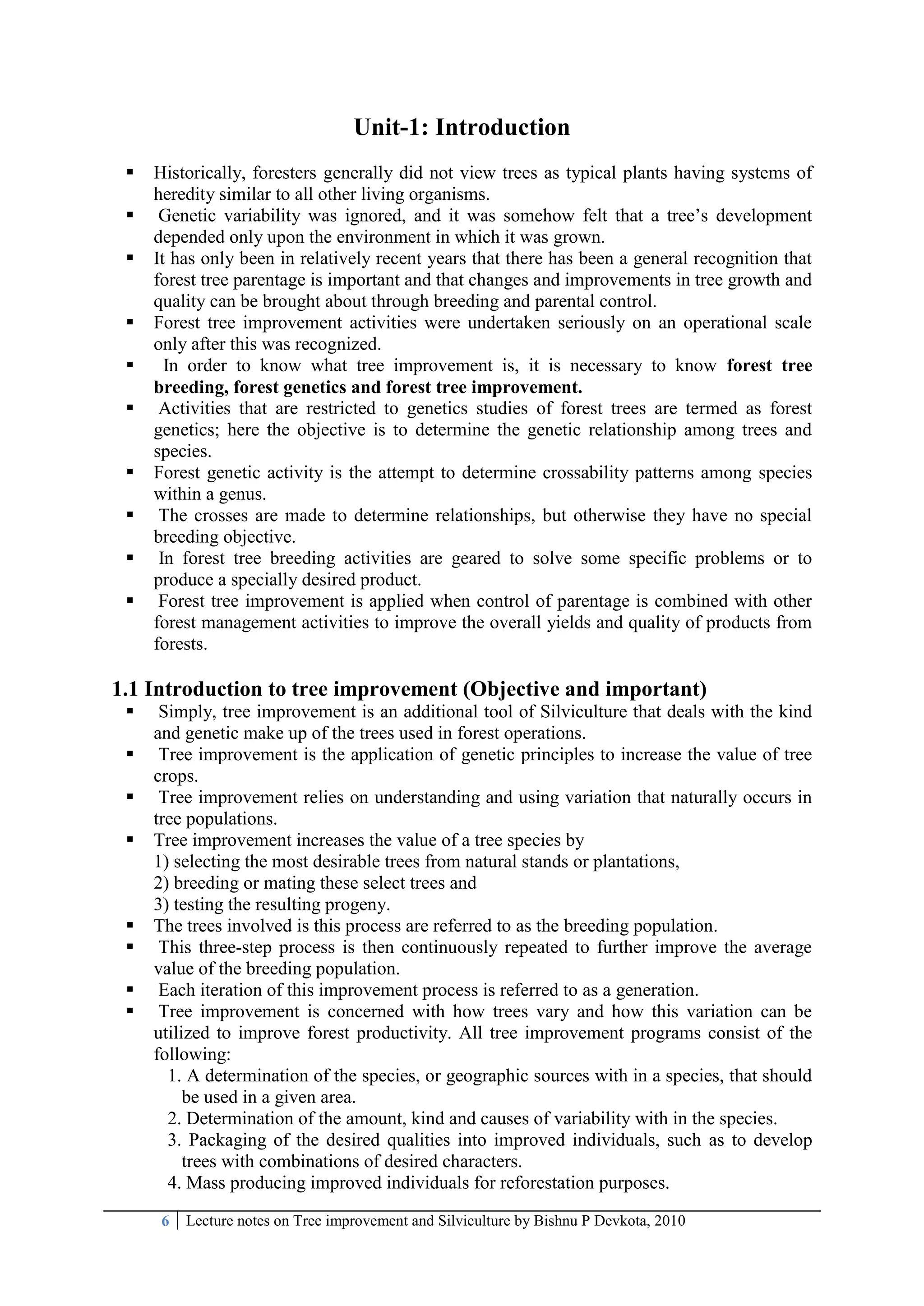
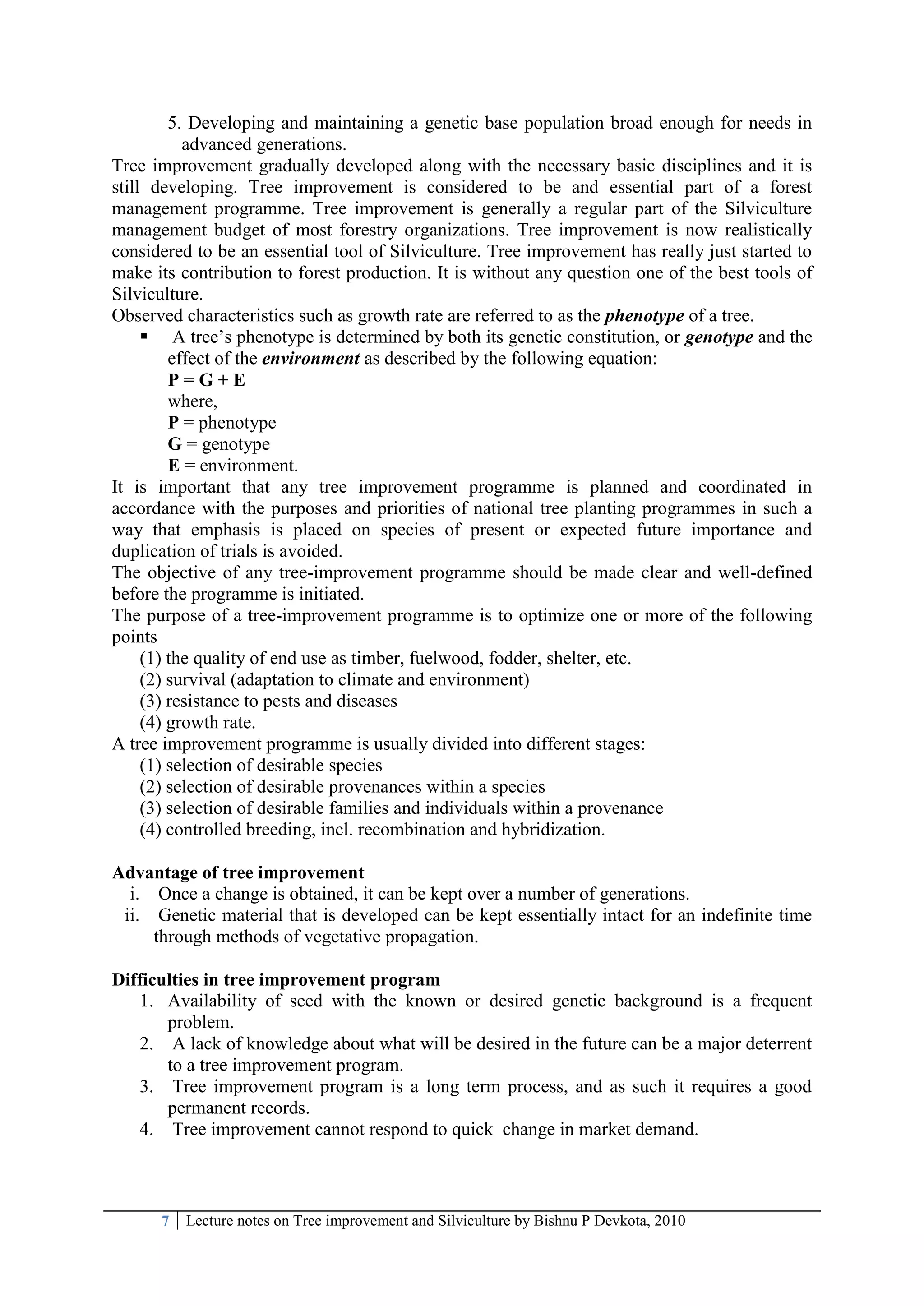
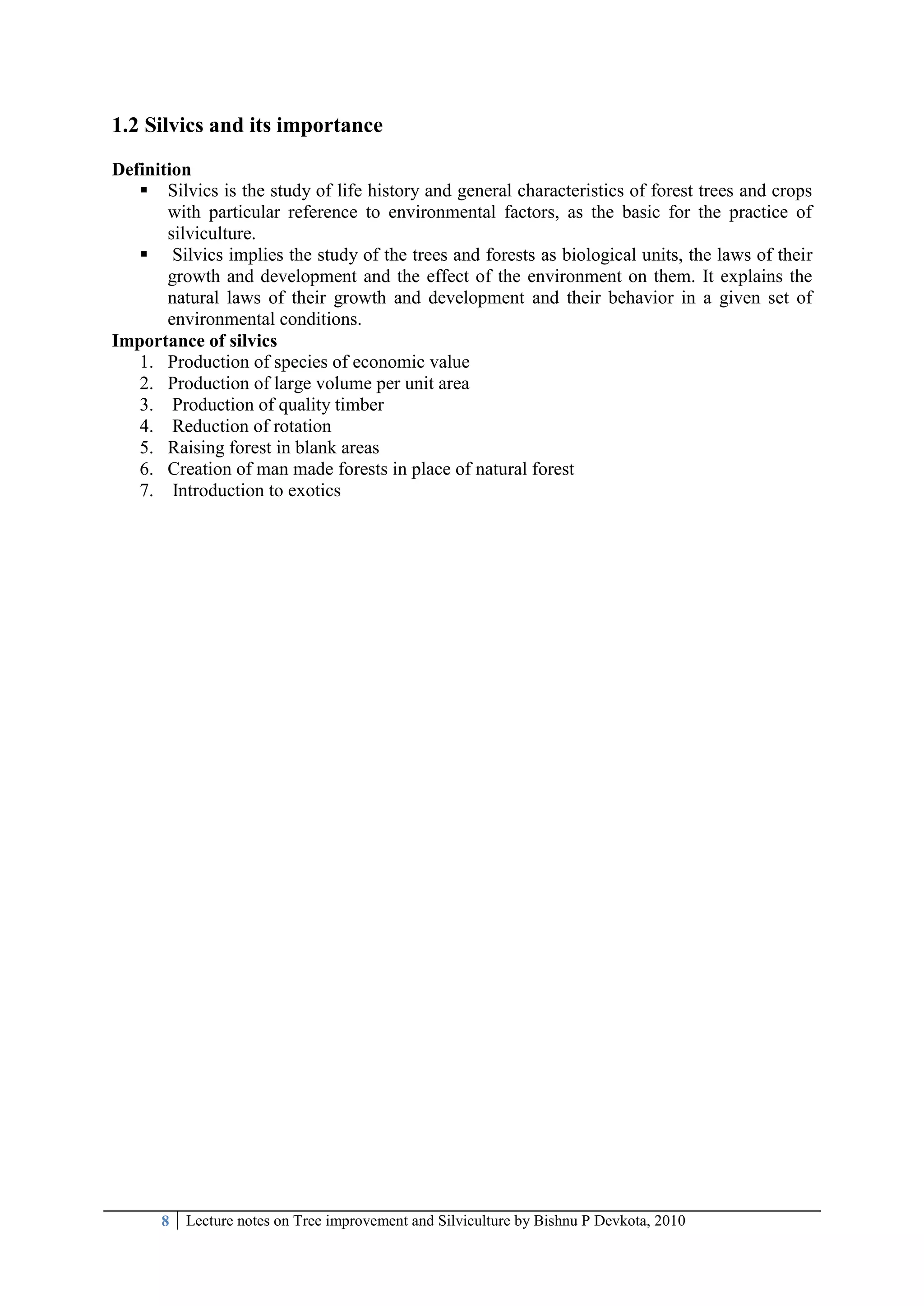


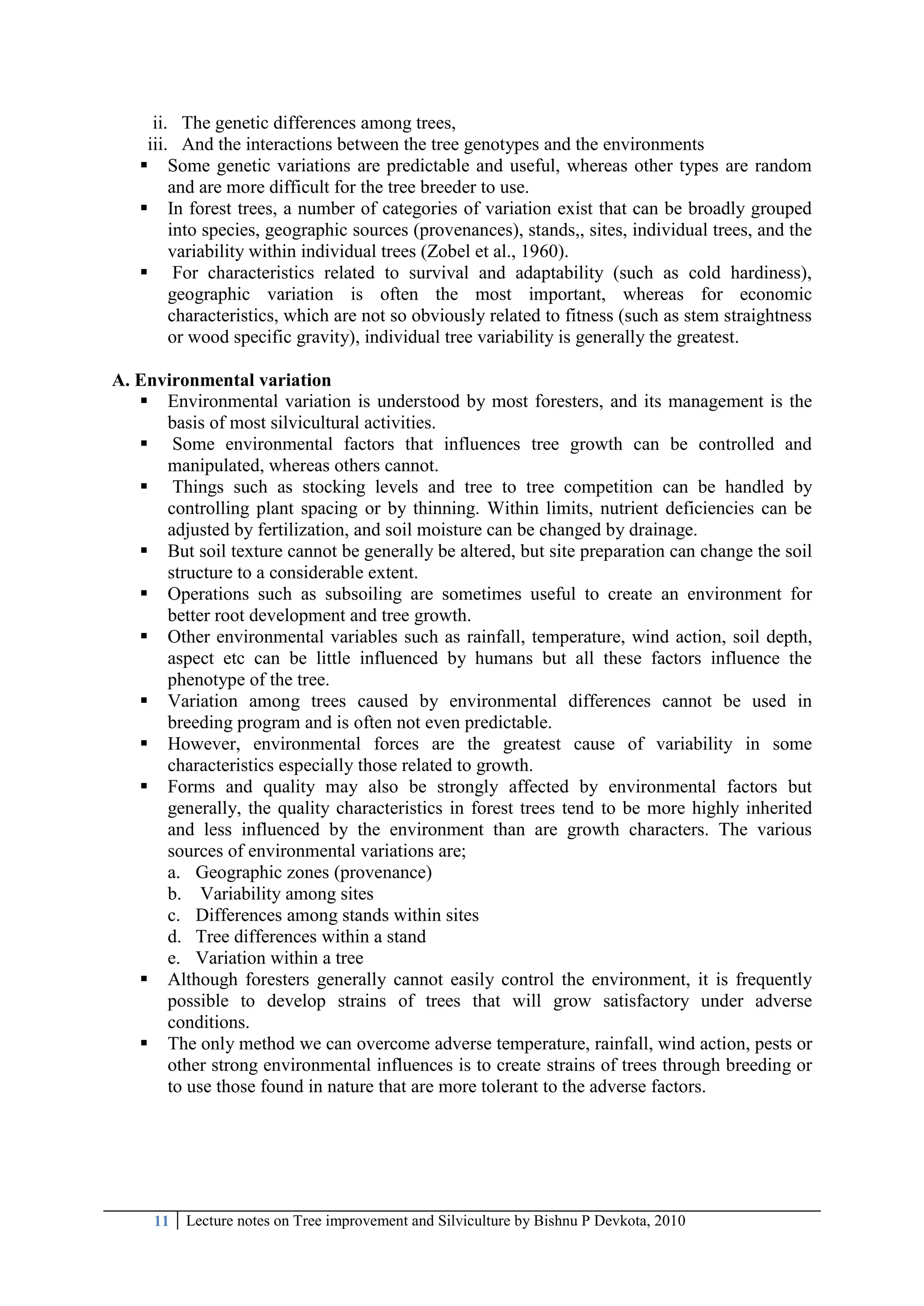

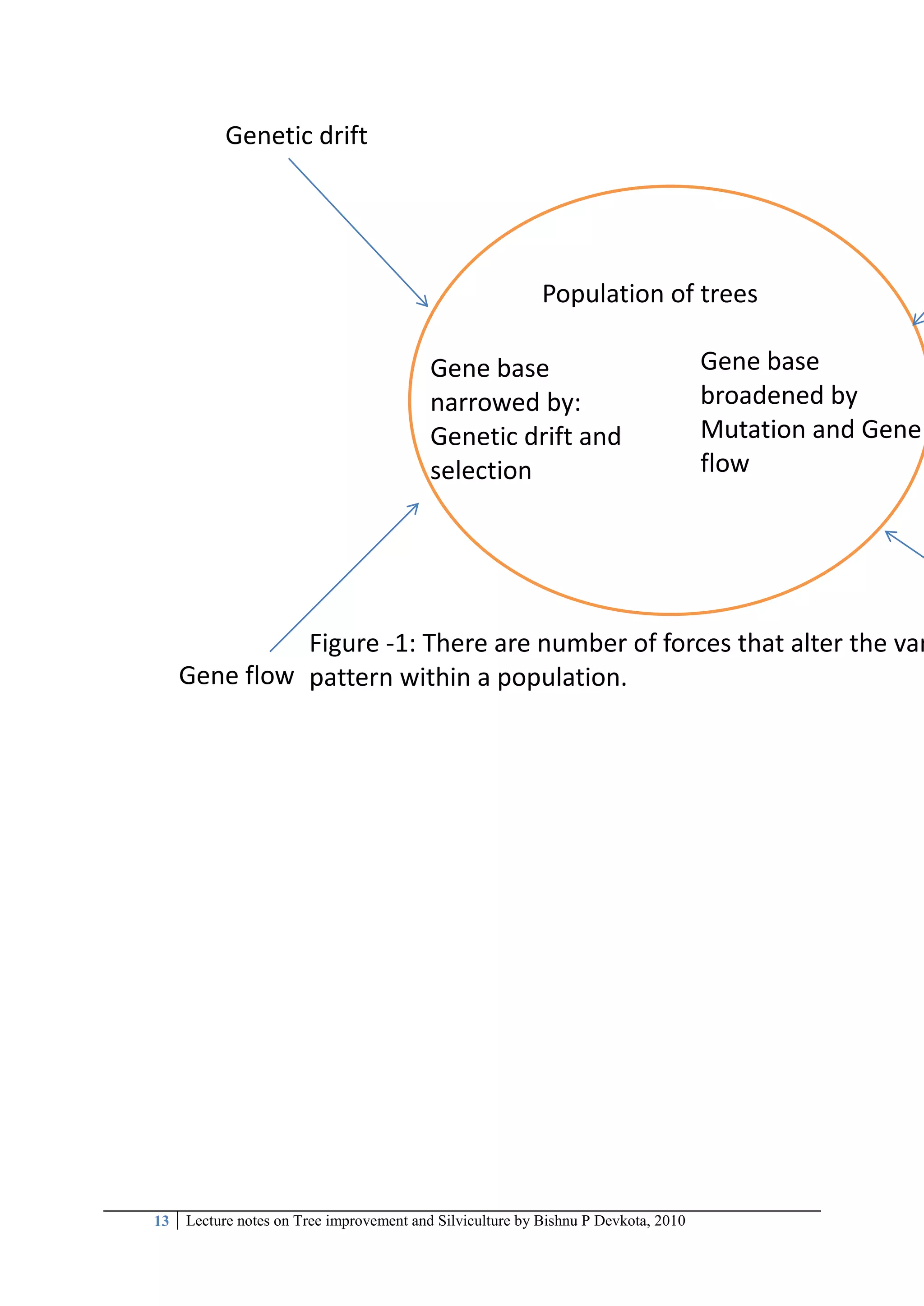
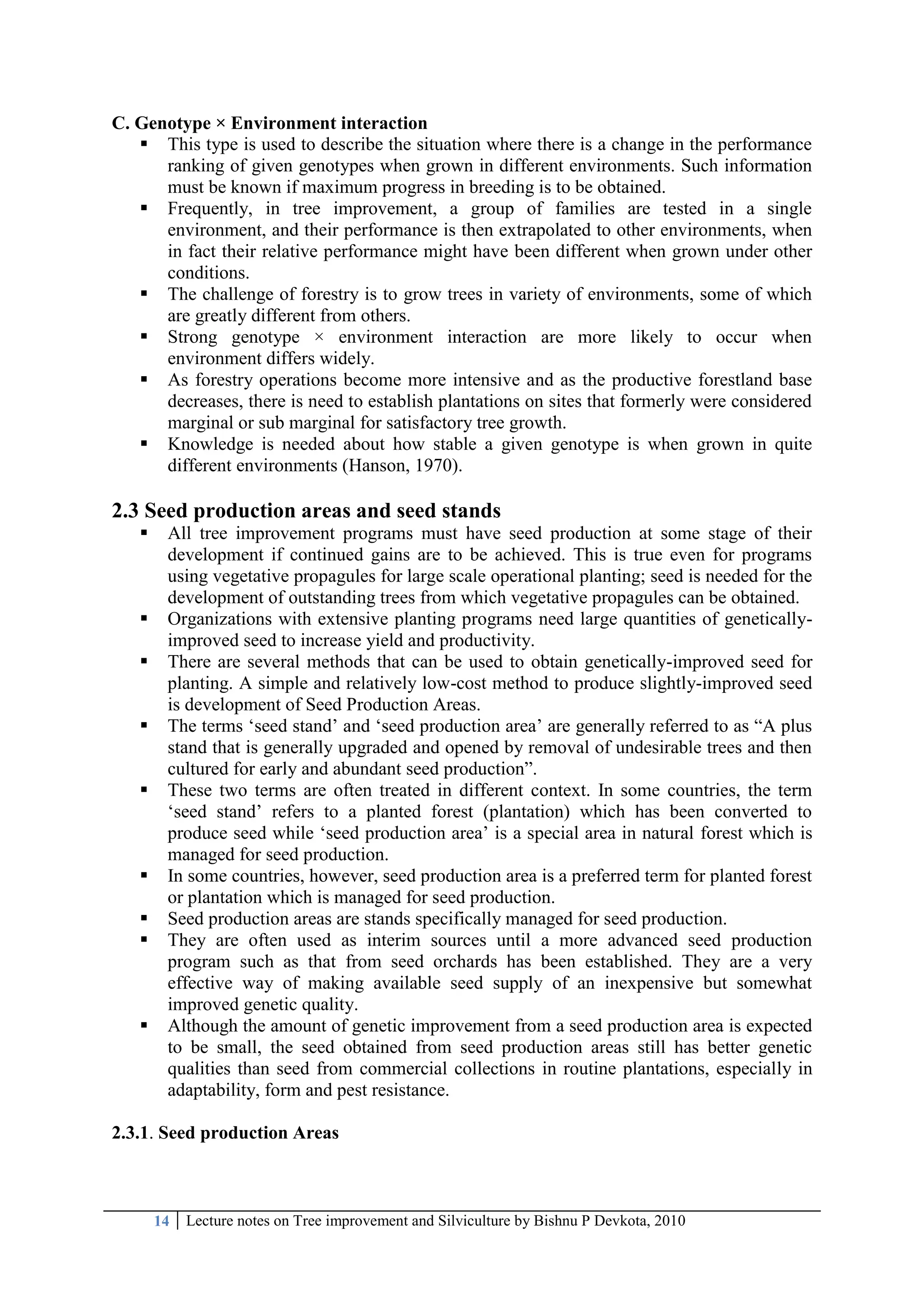
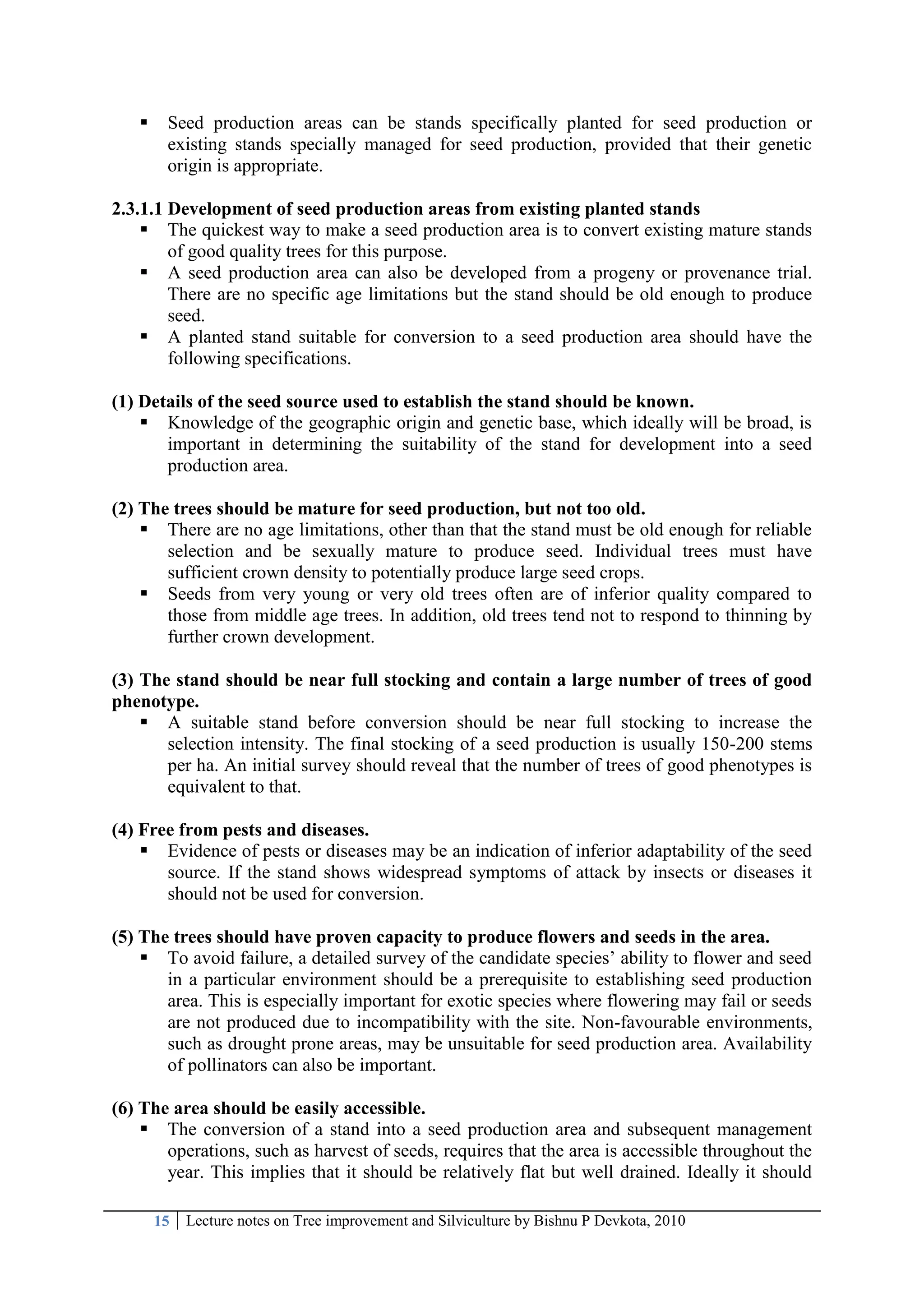
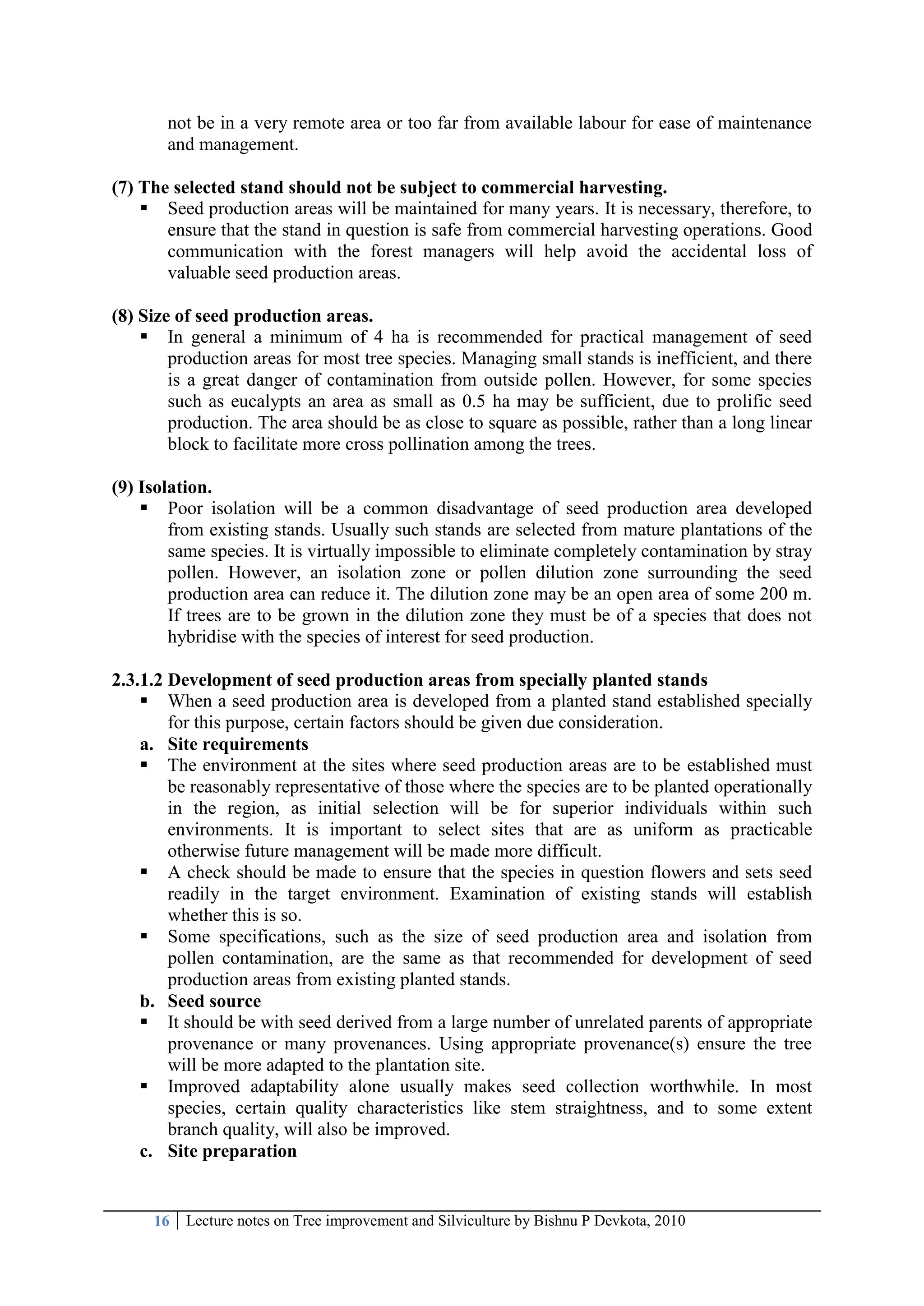
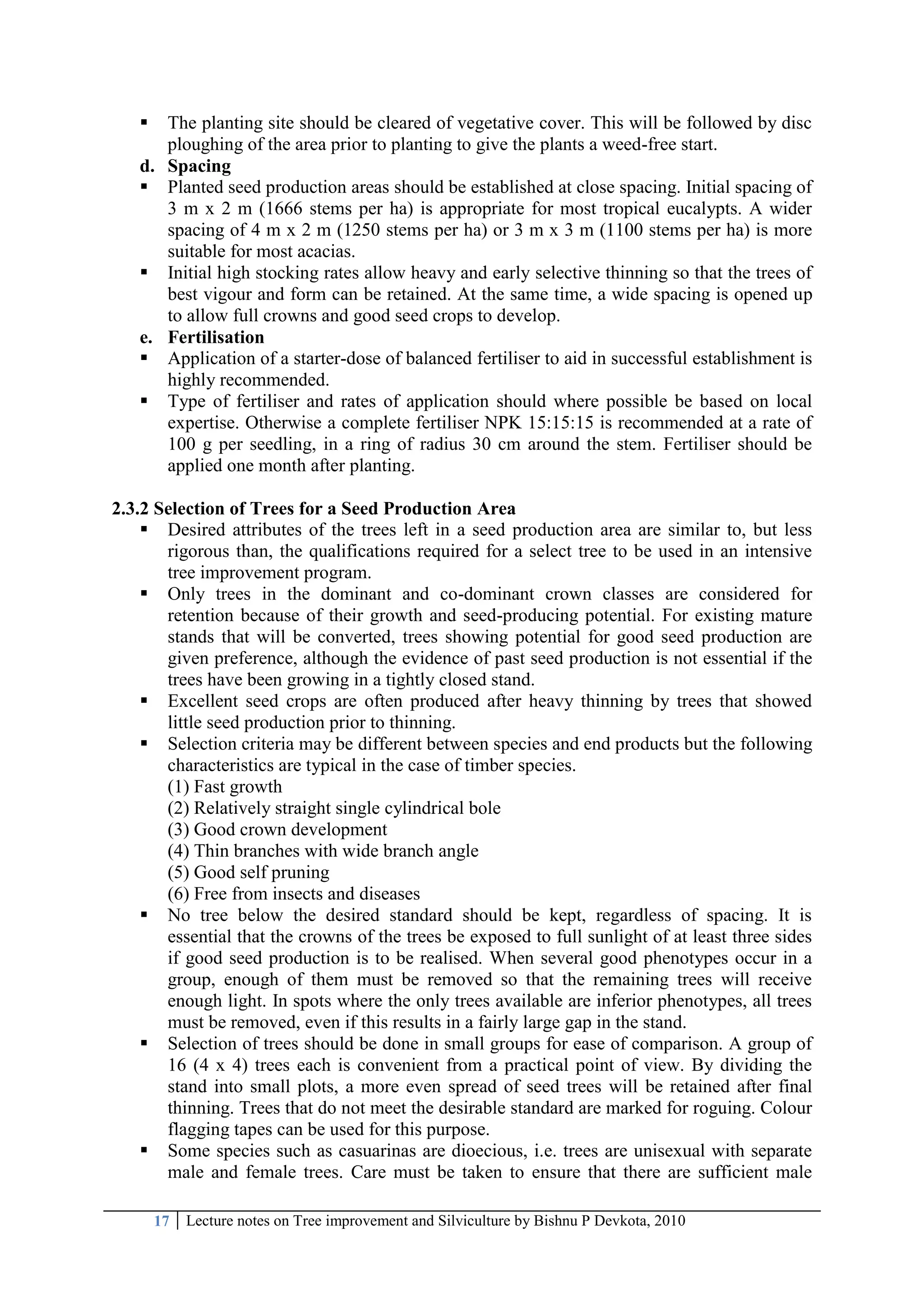
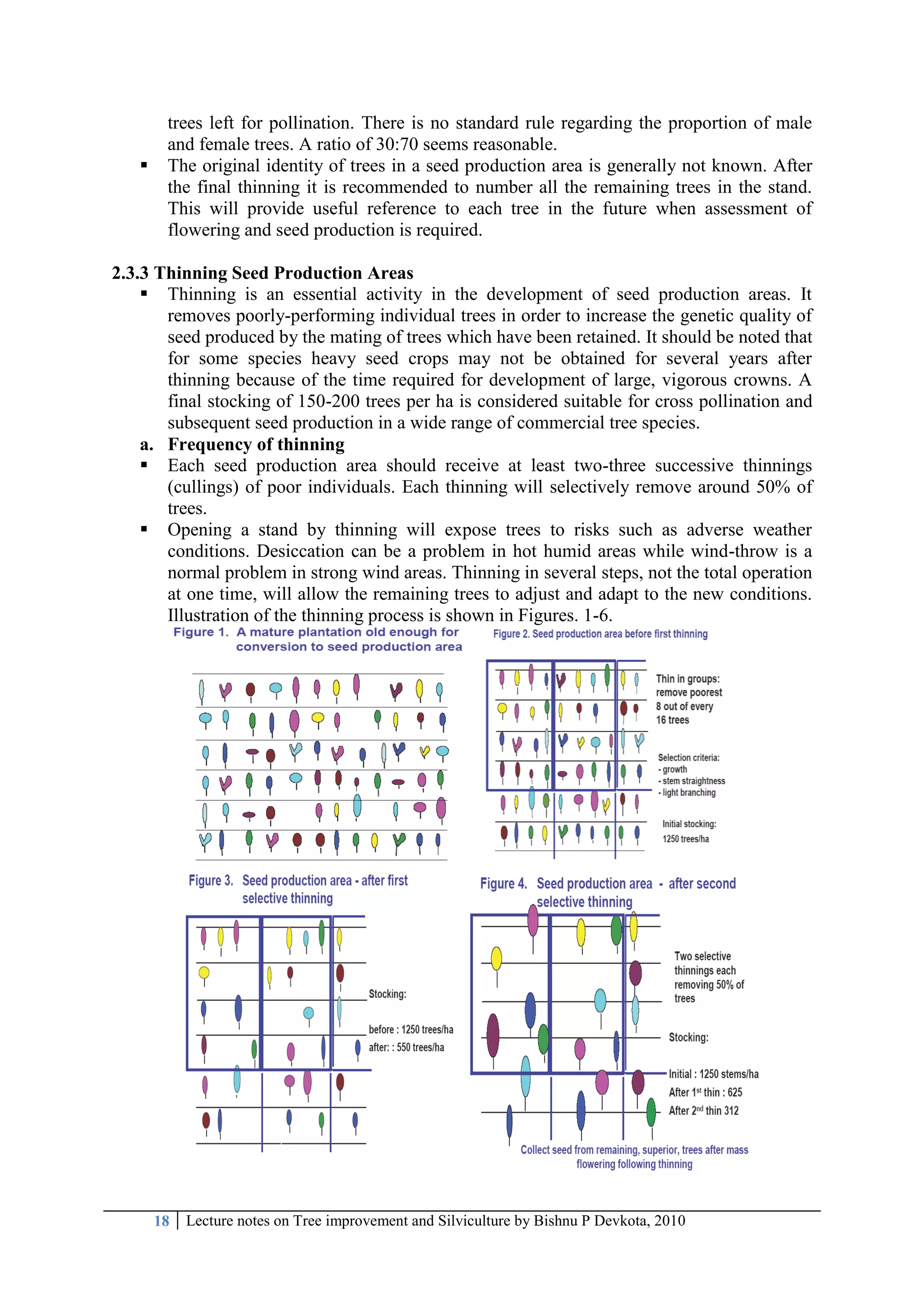
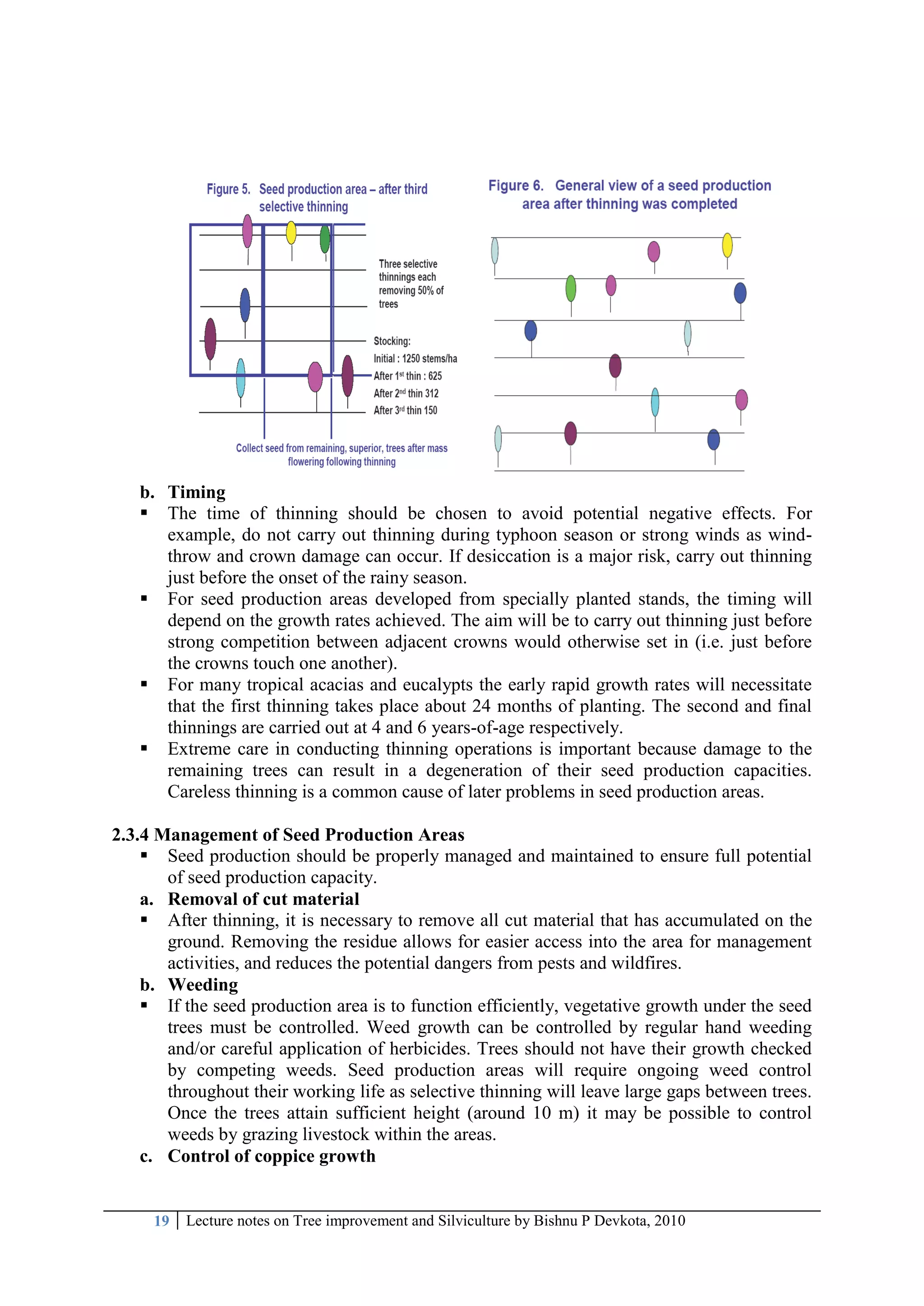
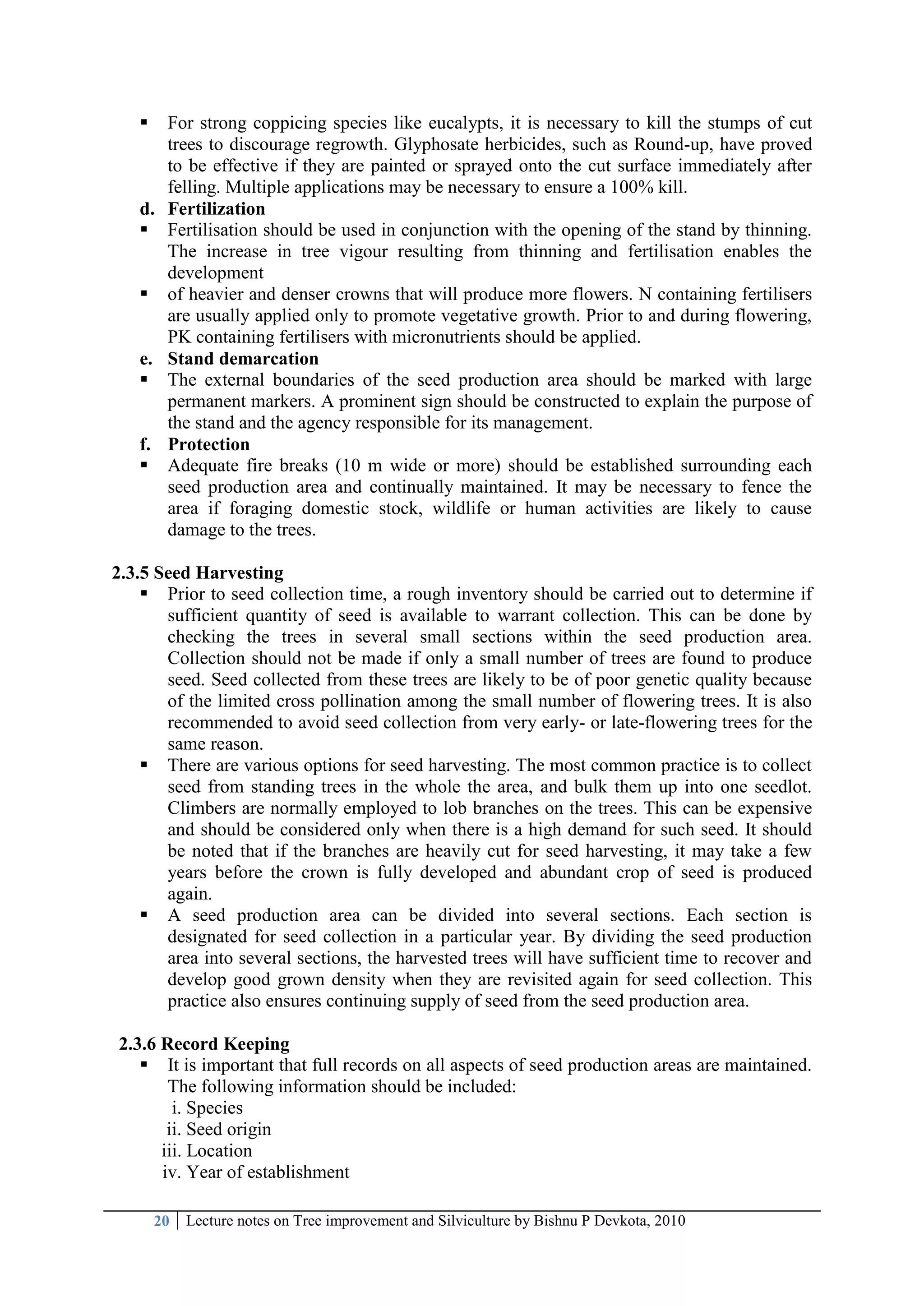
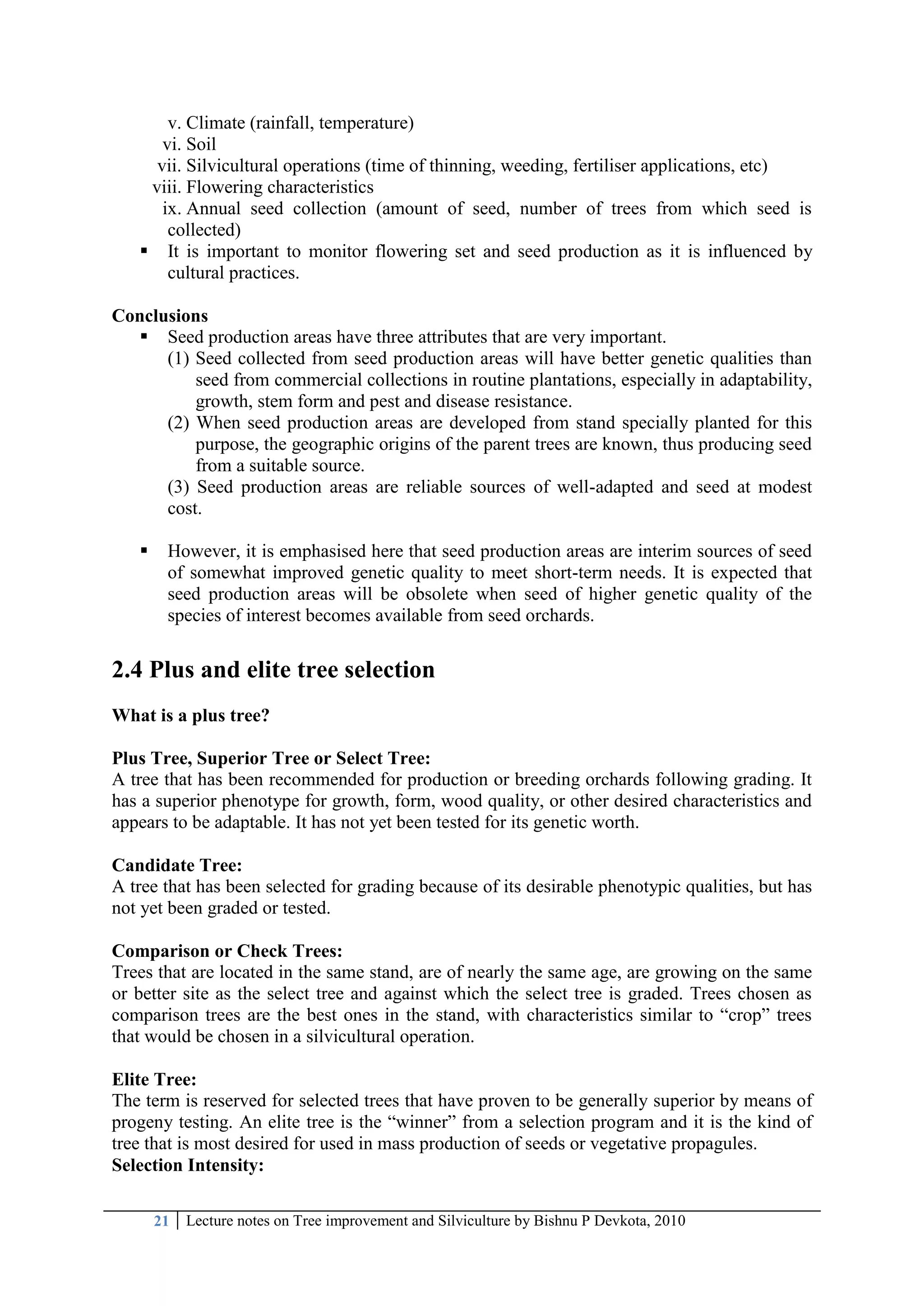
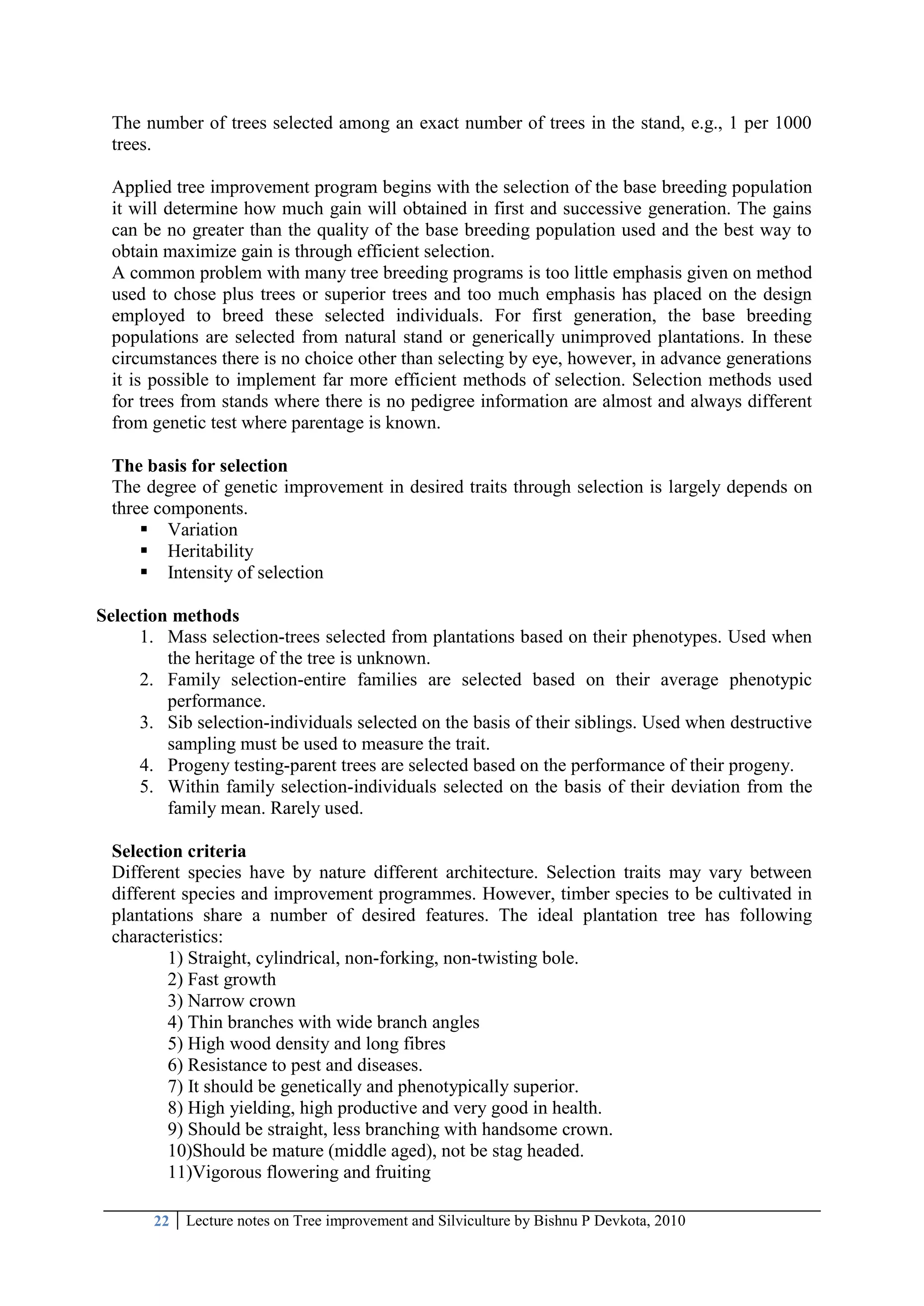
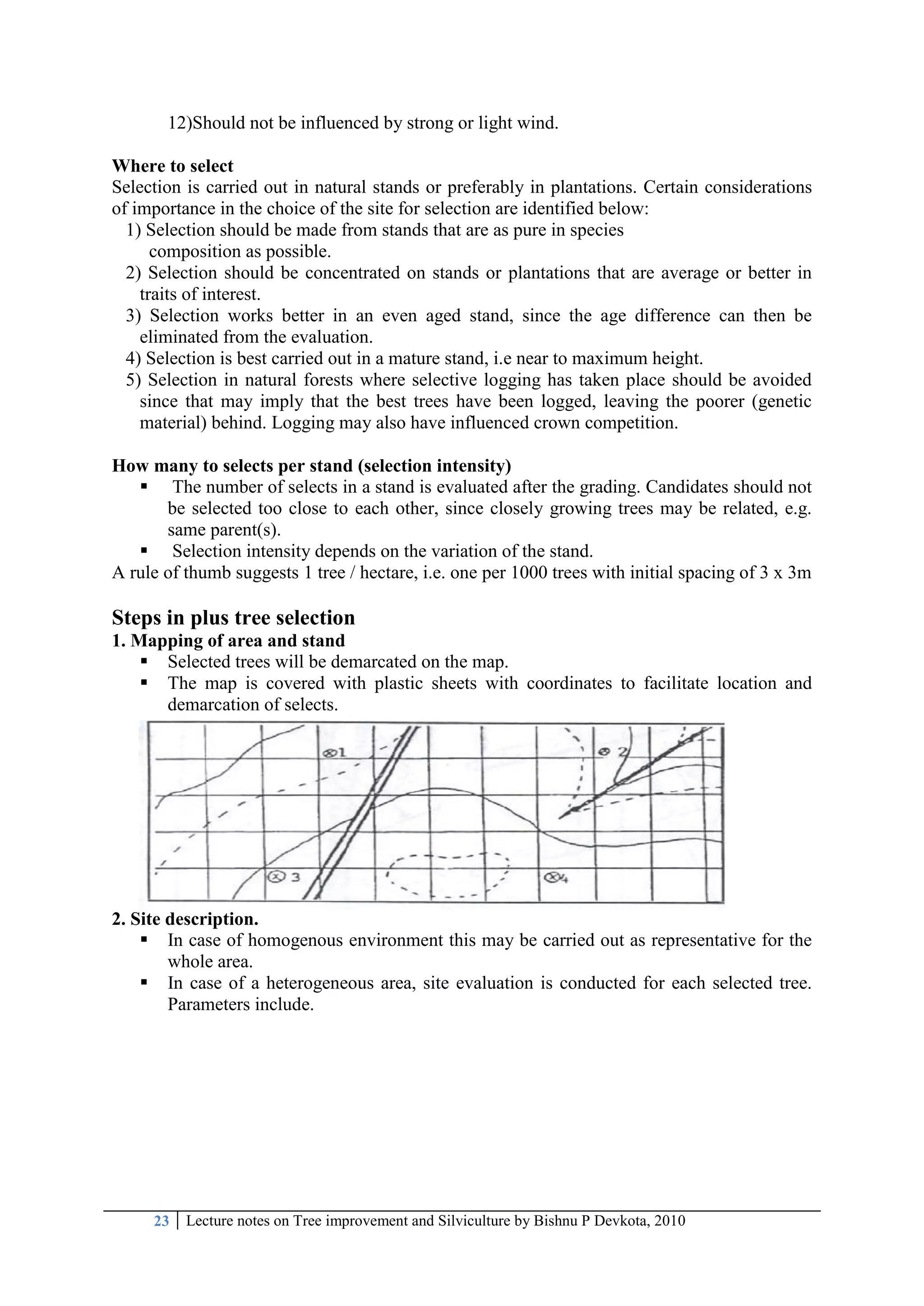

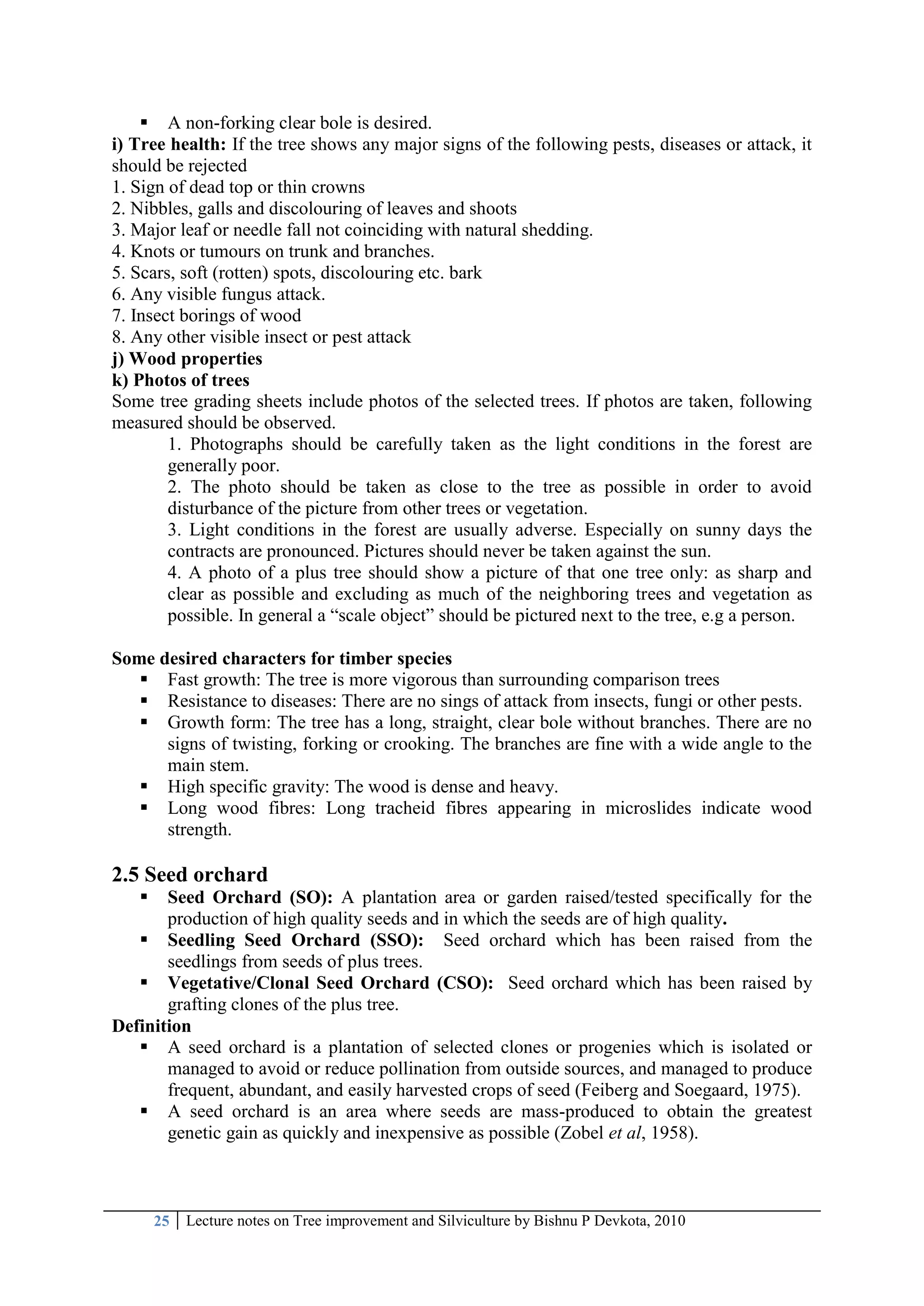
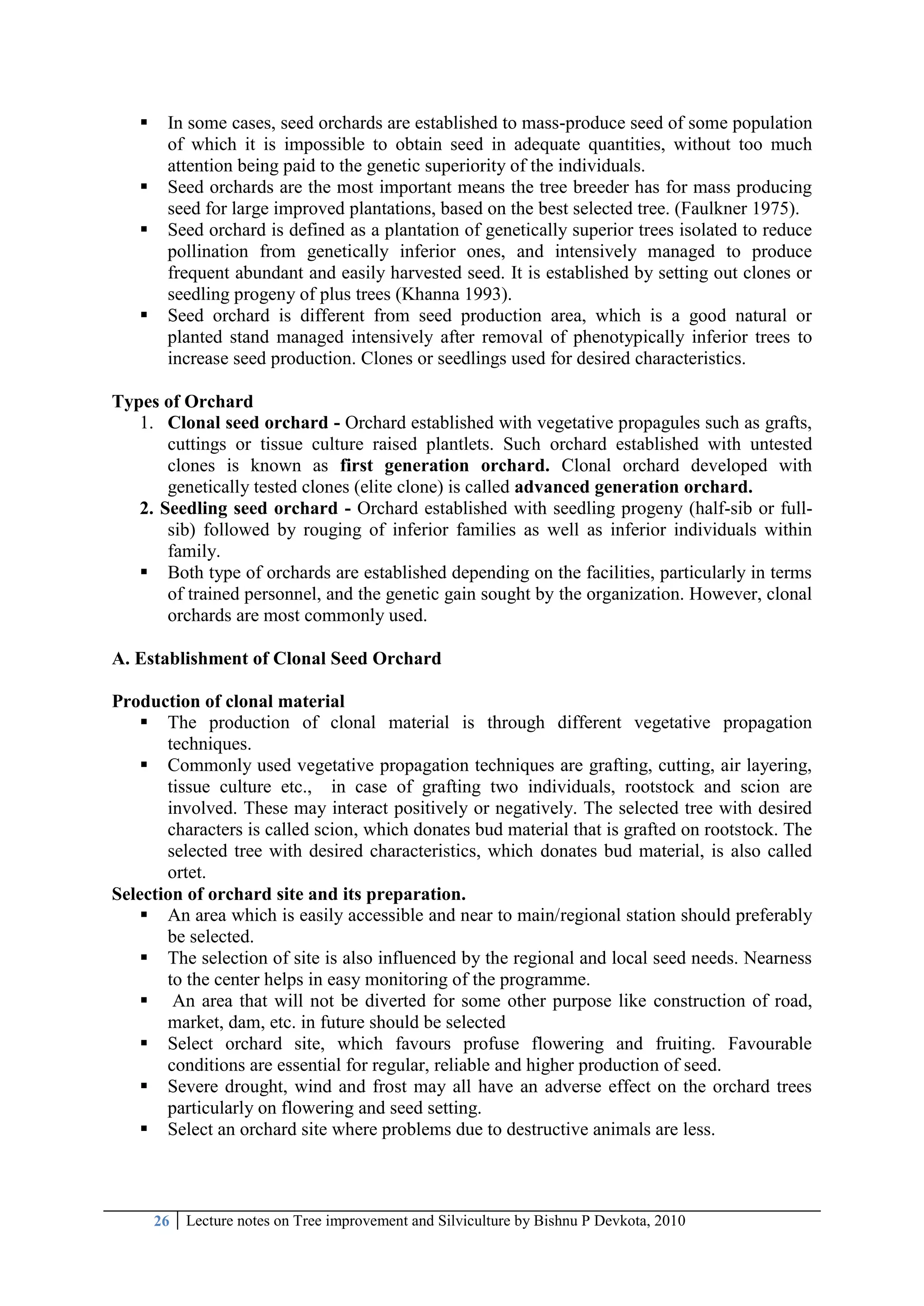
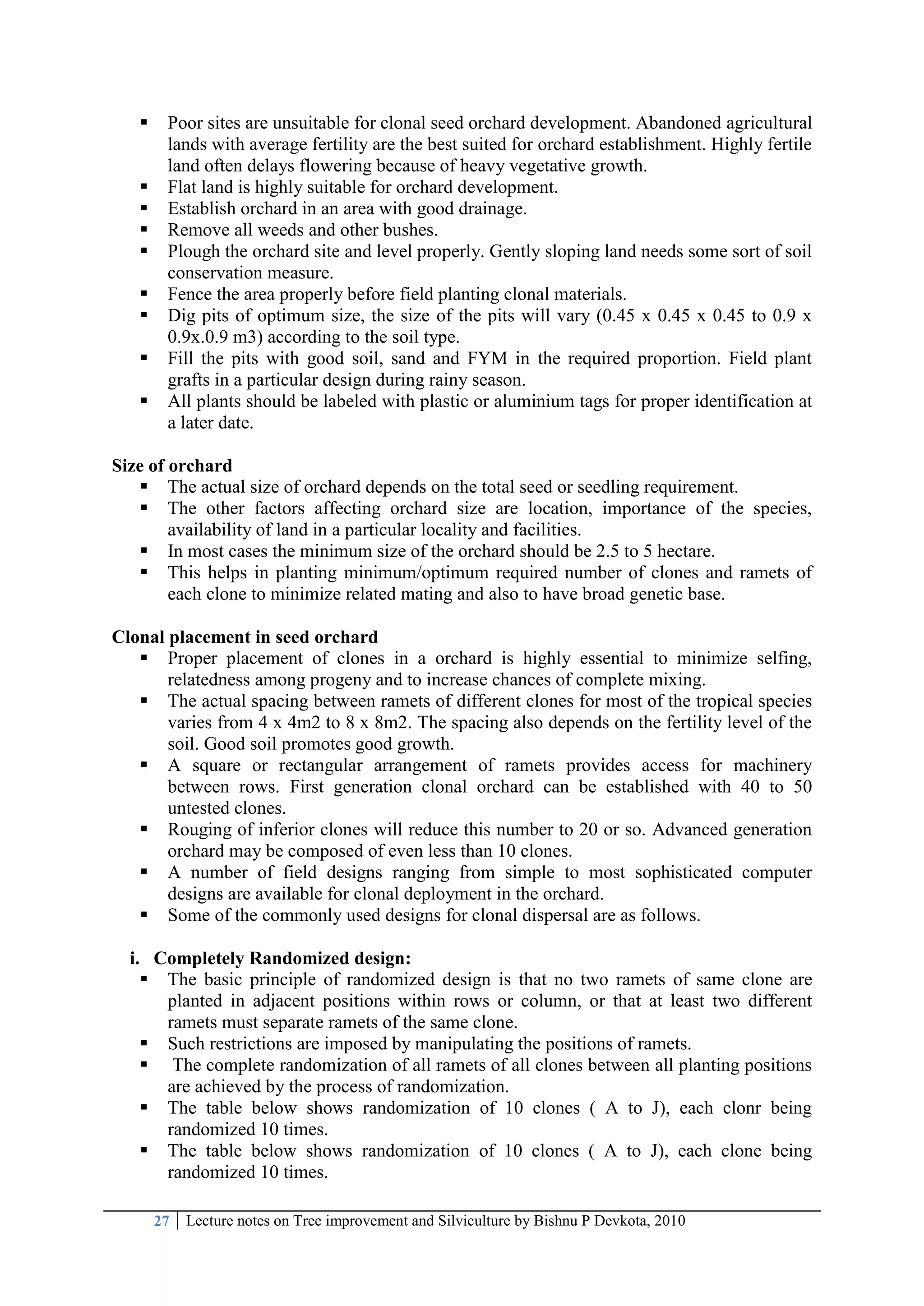

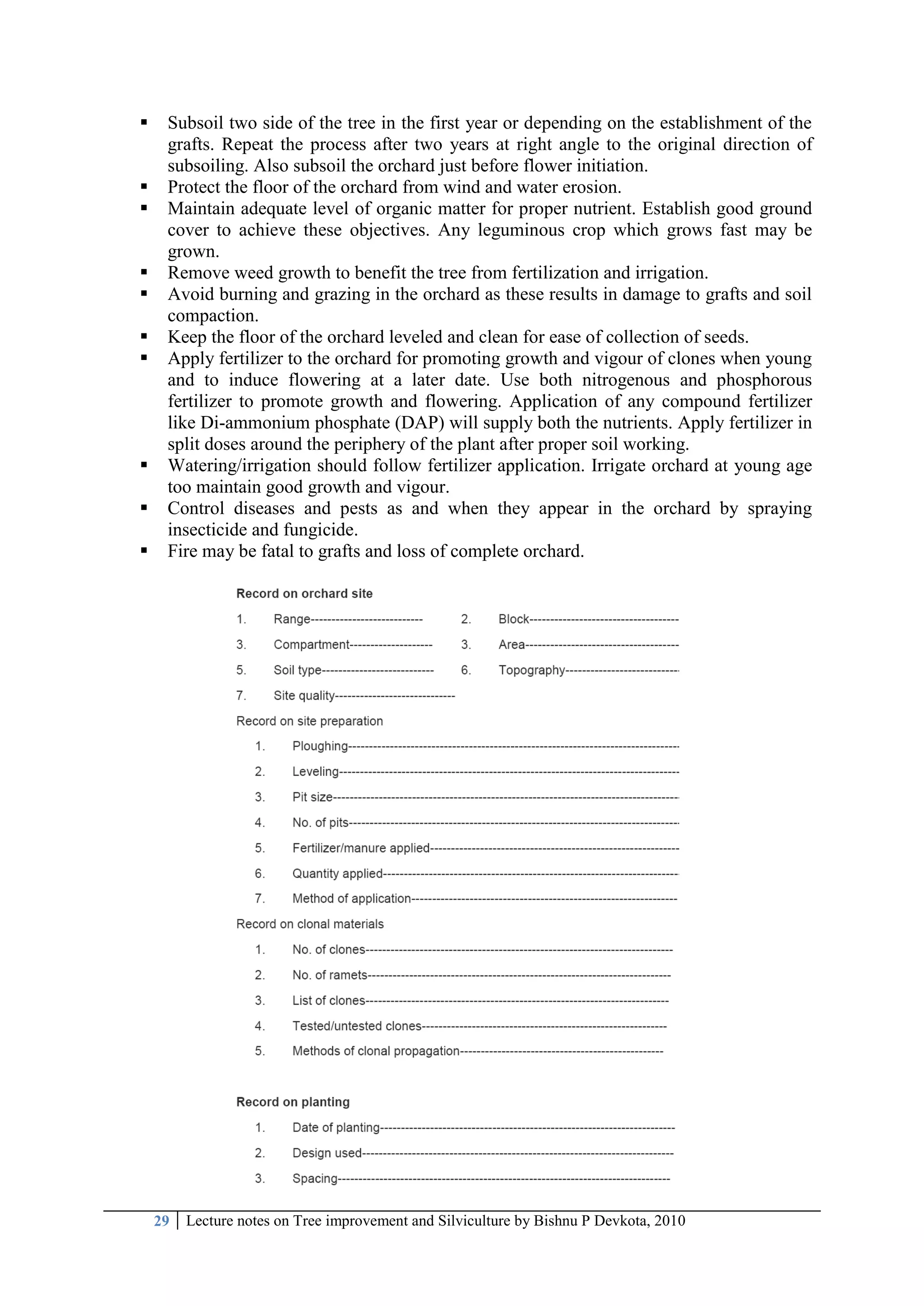

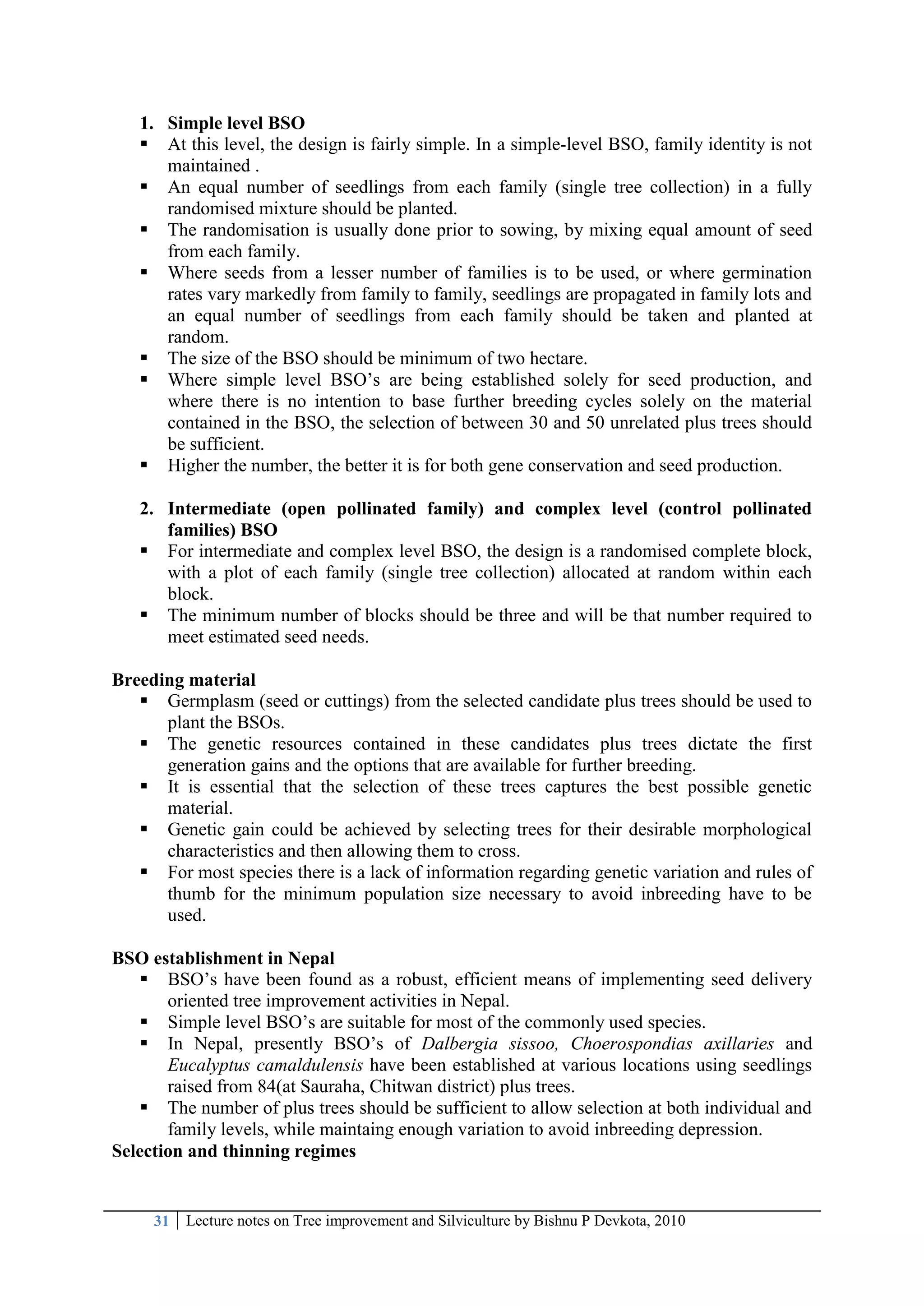



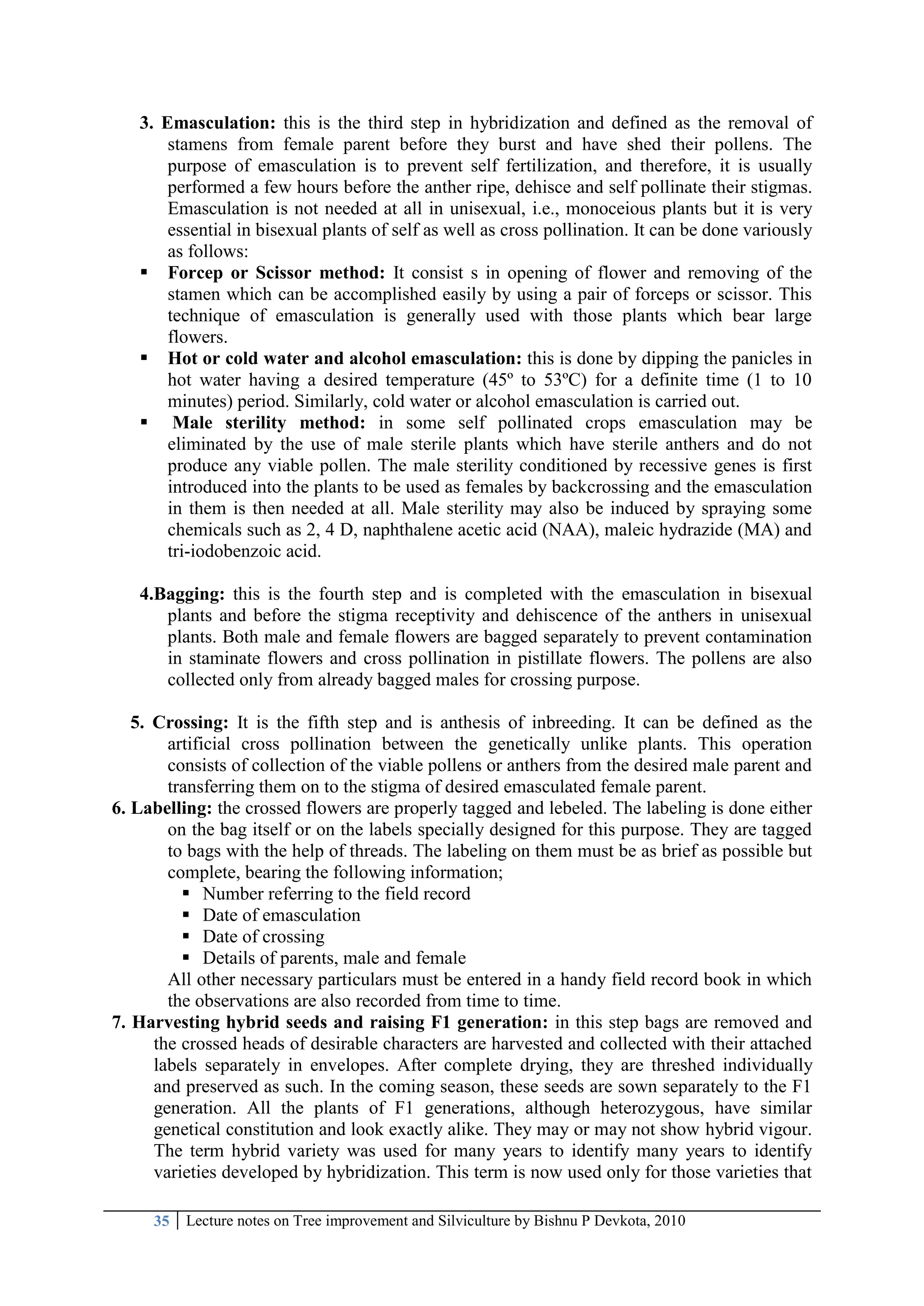
![36 Lecture notes on Tree improvement and Silviculture by Bishnu P Devkota, 2010
express hybrid vigour, i.e., increased growth, size, yield or function over the mean of
parents.
8. Trials, multiplication and distribution: In this step, testing, multiplication and
distribution of so produced hybrid varieties is carried out. The testing is done at various
regional research stations by research workers. The seeds are multiplied at seed
multiplication farms situated at different localities and distributed.
2.7.6 Methods of Hybridization
2.7.6.1 Hybridization in Self Pollinated Crops
Pedigree method: The individual plants are selected from the F1 population on the
basis of desired characters. The number of plants to be selected depends upon the
number of important characters involved, the importance of breeding problem, and
the assistance and facilities available. These plants are harvested and threshed
separately, and sown in the separate rows in the next year to raise the F2 generation.
This process is continued upto F4 or F5 generation. The plants uniform in desired
characters is harvested and bulked together to constitute a variety.
Bulk Method: In this method F3 plants are not maintained separately but are bulked
together to form a single F3 population. In F3 , again the suitable plants are selected,
collected and bulked together. This bulking is done for six generations. In F6, the
desired individuals are selected and harvested separately and new variety is released.
Back cross method: This method is employed in improvement of both self and cross
pollinated crops where varieties are deficient in one or two aspects particularly for
transferring a single simply inherited characters like disease, frost or drought
resistance. In this method F1 plants, instead of permitting to self pollinate as in
pedigree or bulk method, are crossed with the recurrent parent and there fore it is
called as backcross method. The purpose of backcrossing is to recover the genotype of
recurrent parent with disease resistance. Back cross method has got many advantages
as
a) Independence from environment, ie, it can be used in any environment where the
plant will grow and character under transfer will express itself.
b) No need of evaluation of performance, ie, back cross derived varieties can be
safely released to growers without evaluation o f yield, adoption or quality
c) It is rapid
d) It requires a small number of plants
e) It is repeatable
f) It is predictable
Multiple / composite cross method: It consists in crossing of several pure-lines
together. The selected pure-lines are first combined into crosses as A x B, C x D, E x
F, G x H, and so on. F1 of these single crosses are then combined into double crosses
as (A x B) X (C x D) and (E x F) X (G x H). Finally the F1s of double crosses are
crossed with each other to produce the hybrids [(A x B) X (C x D) X (E x F) X (G x
H)]. This cross is known as multiple cross and further breeding in these hybrids are
carried out according to either pedigree or bulk method.
2.7.6.2 Hybridization in Cross Pollinated Crops
Single cross: This is the cross between two inbreeds, such as A x B or C x D and its
hybrid seed is distributed to growers. This gives the maximum degree of hybrid
vigour and produce most uniform plants.](https://image.slidesharecdn.com/tis-180526070904/75/Tree-Improvement-and-Silviculture-iof-37-2048.jpg)
